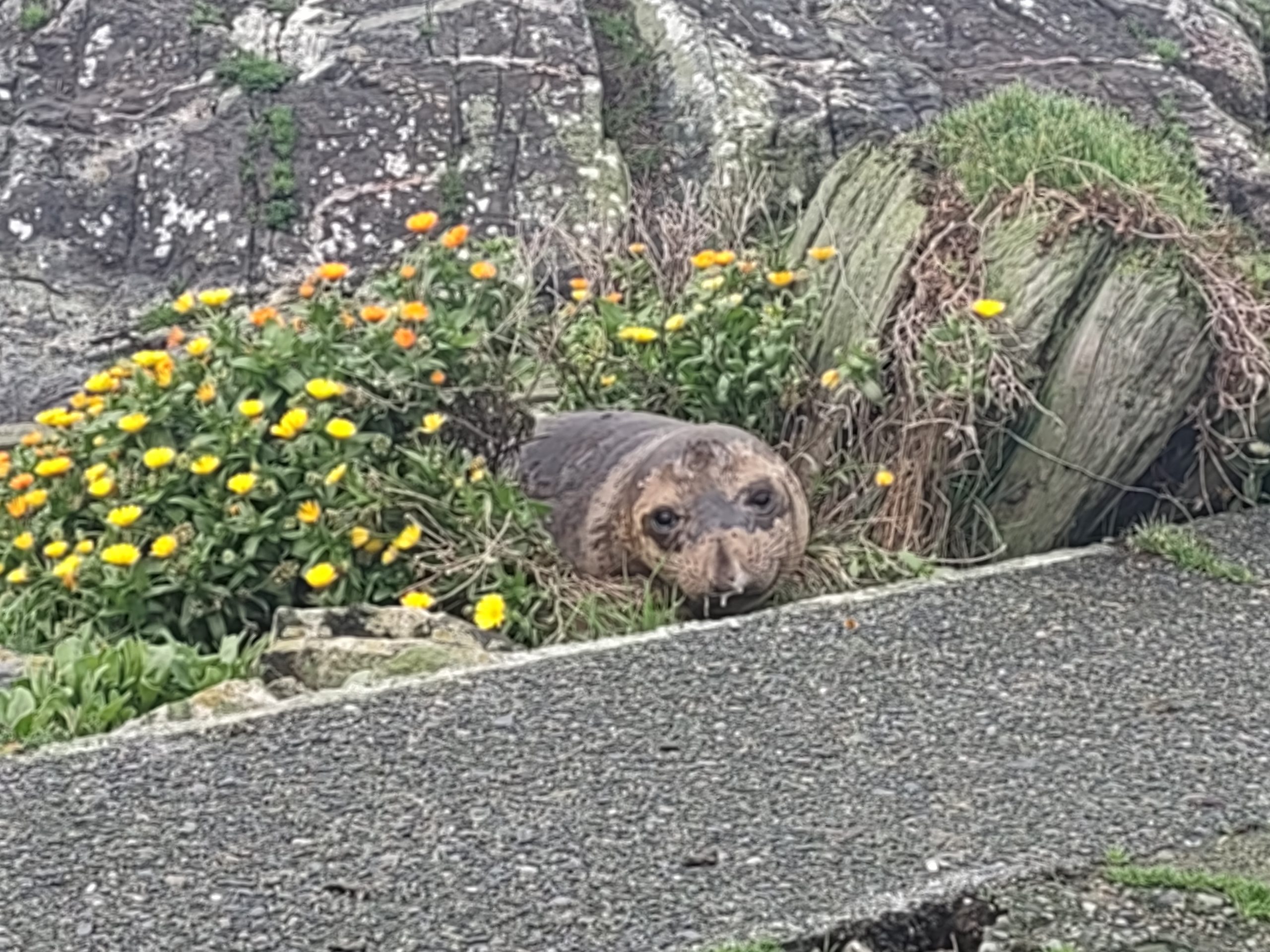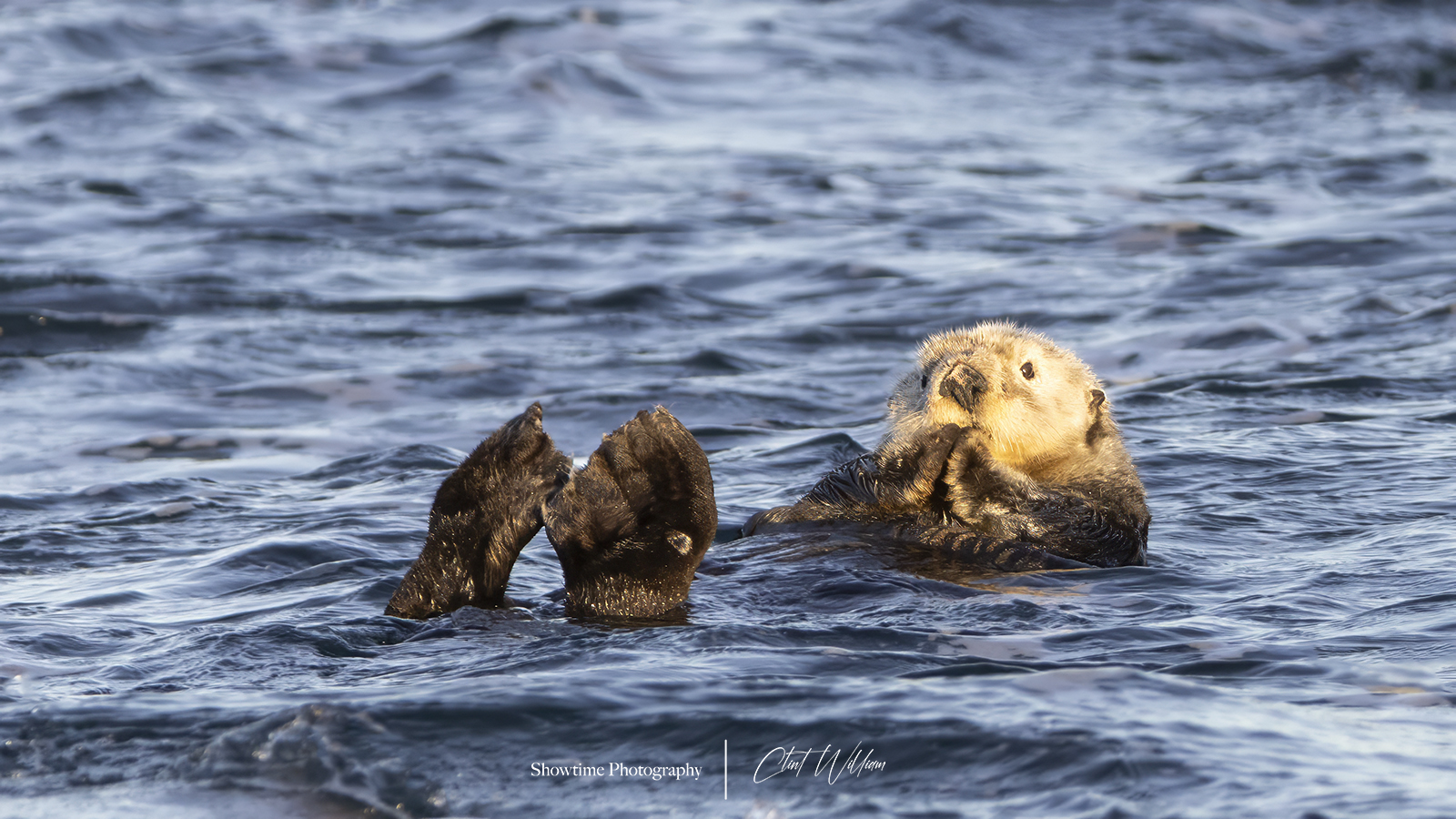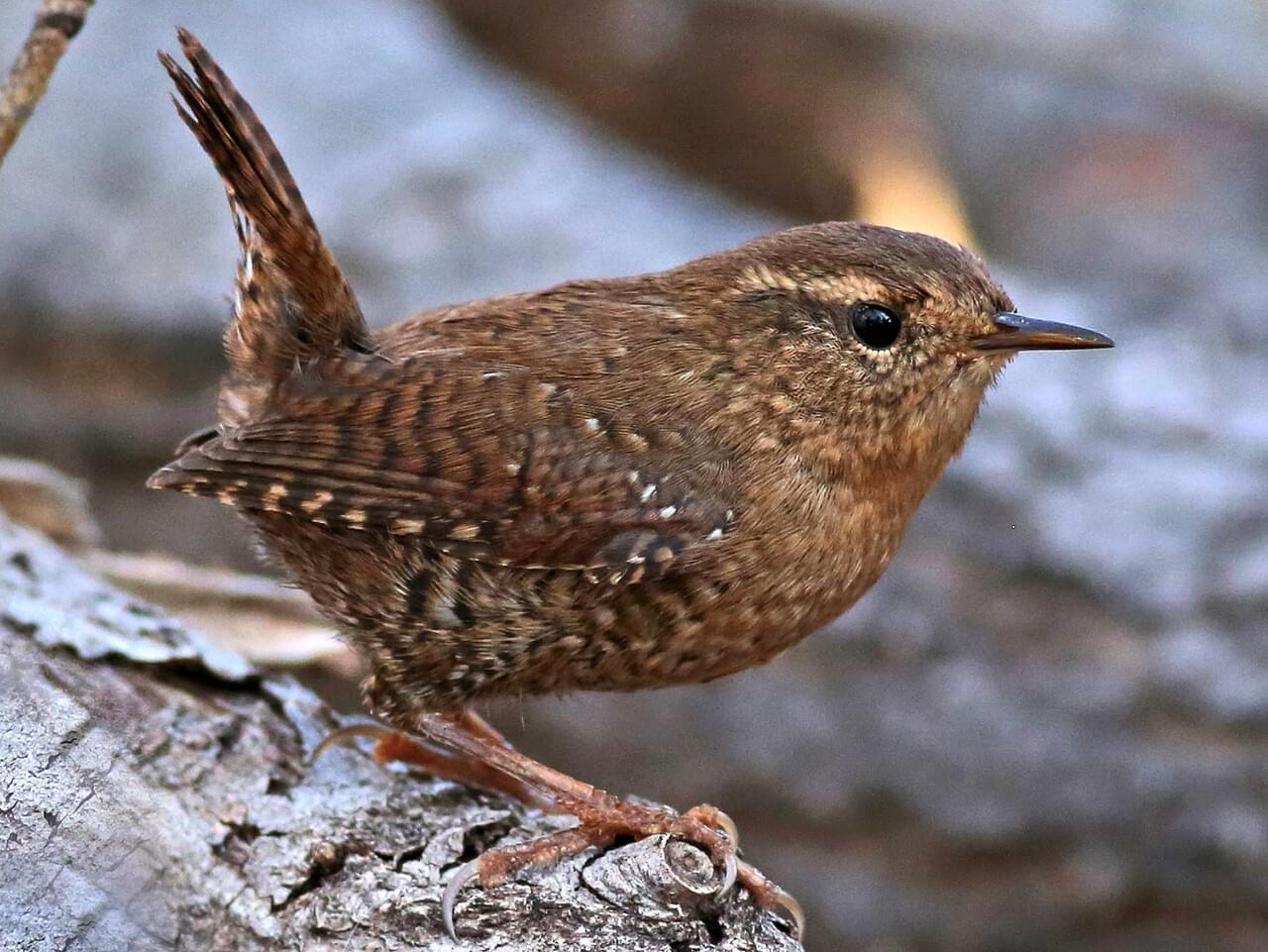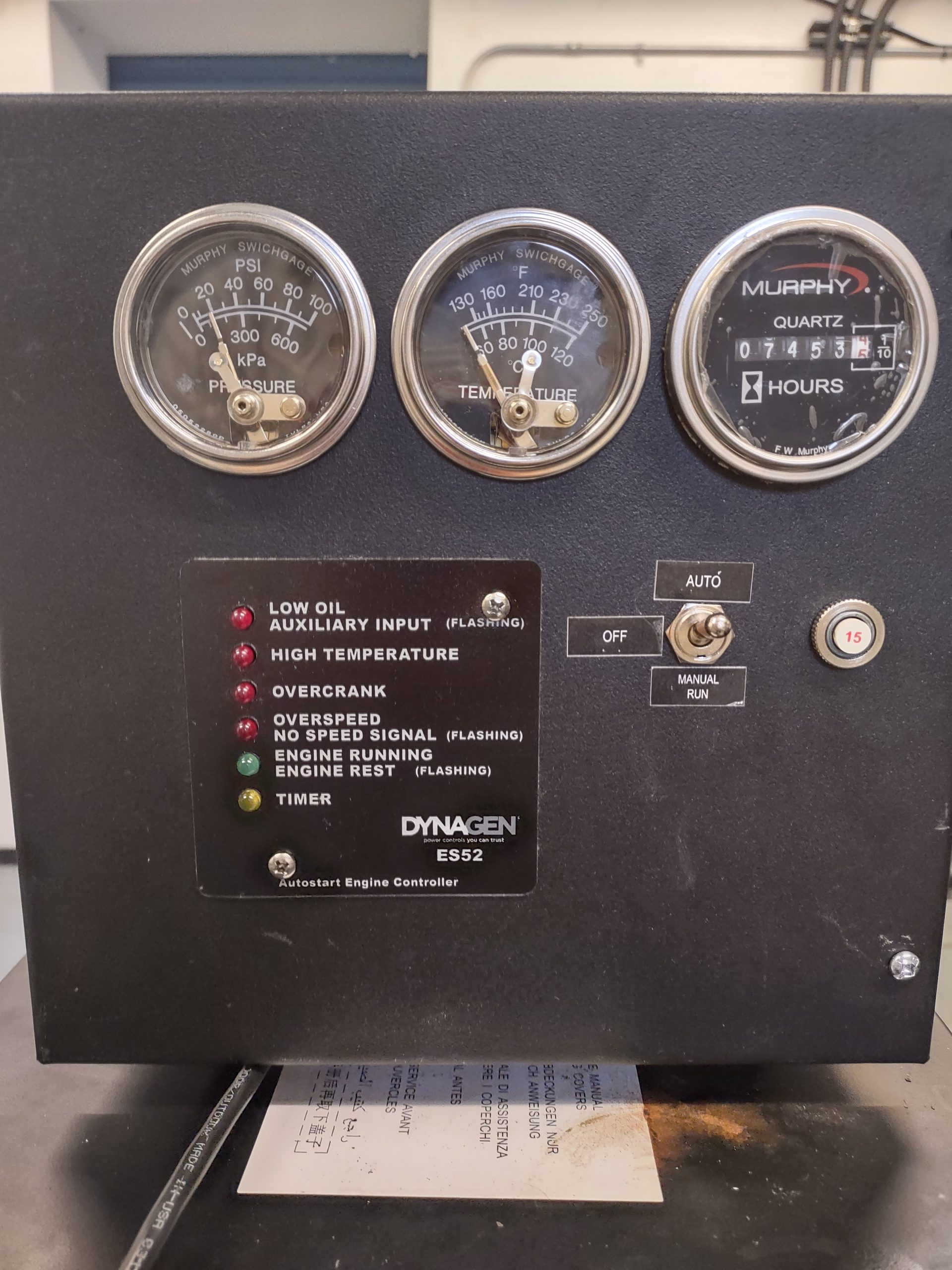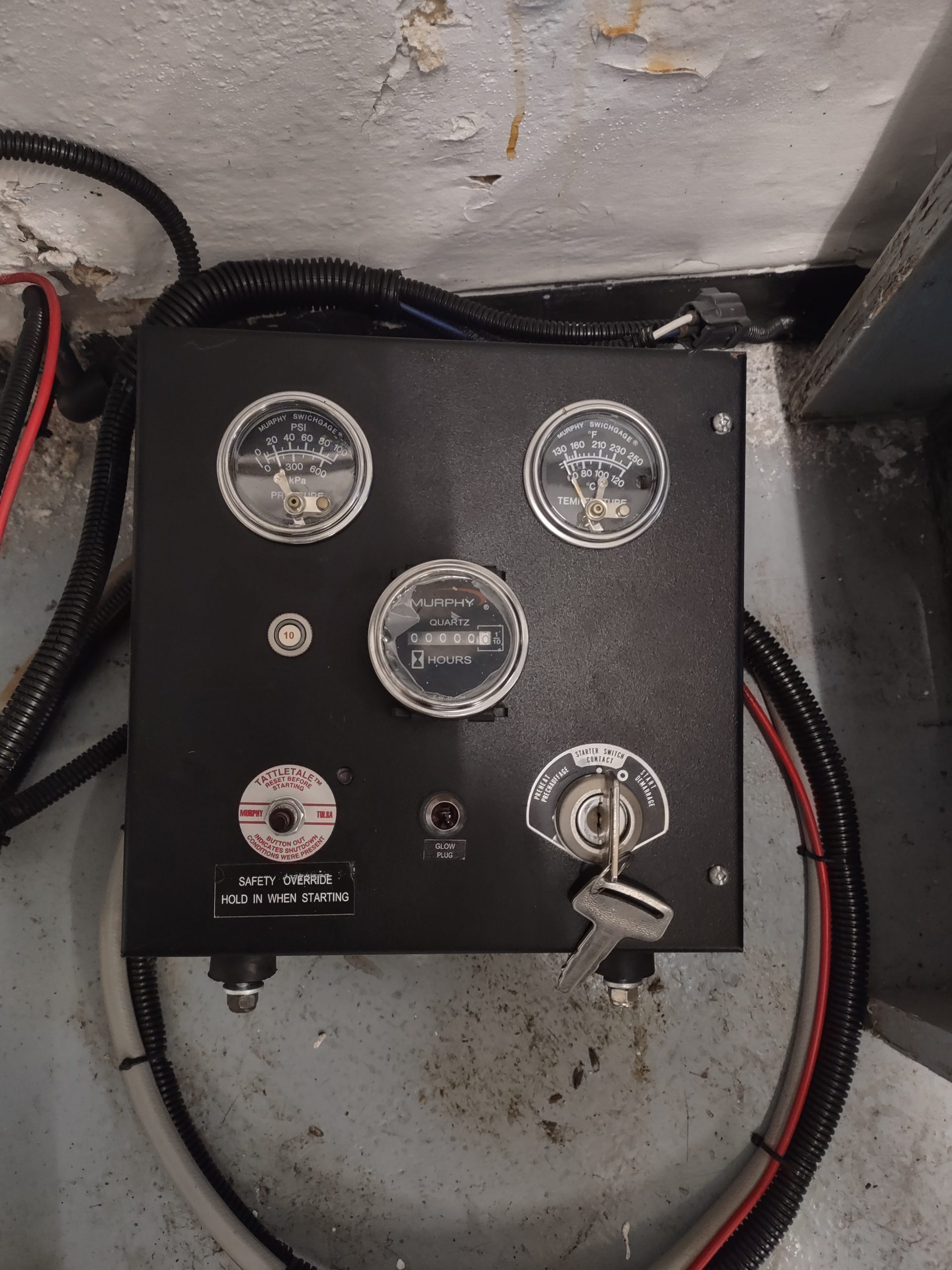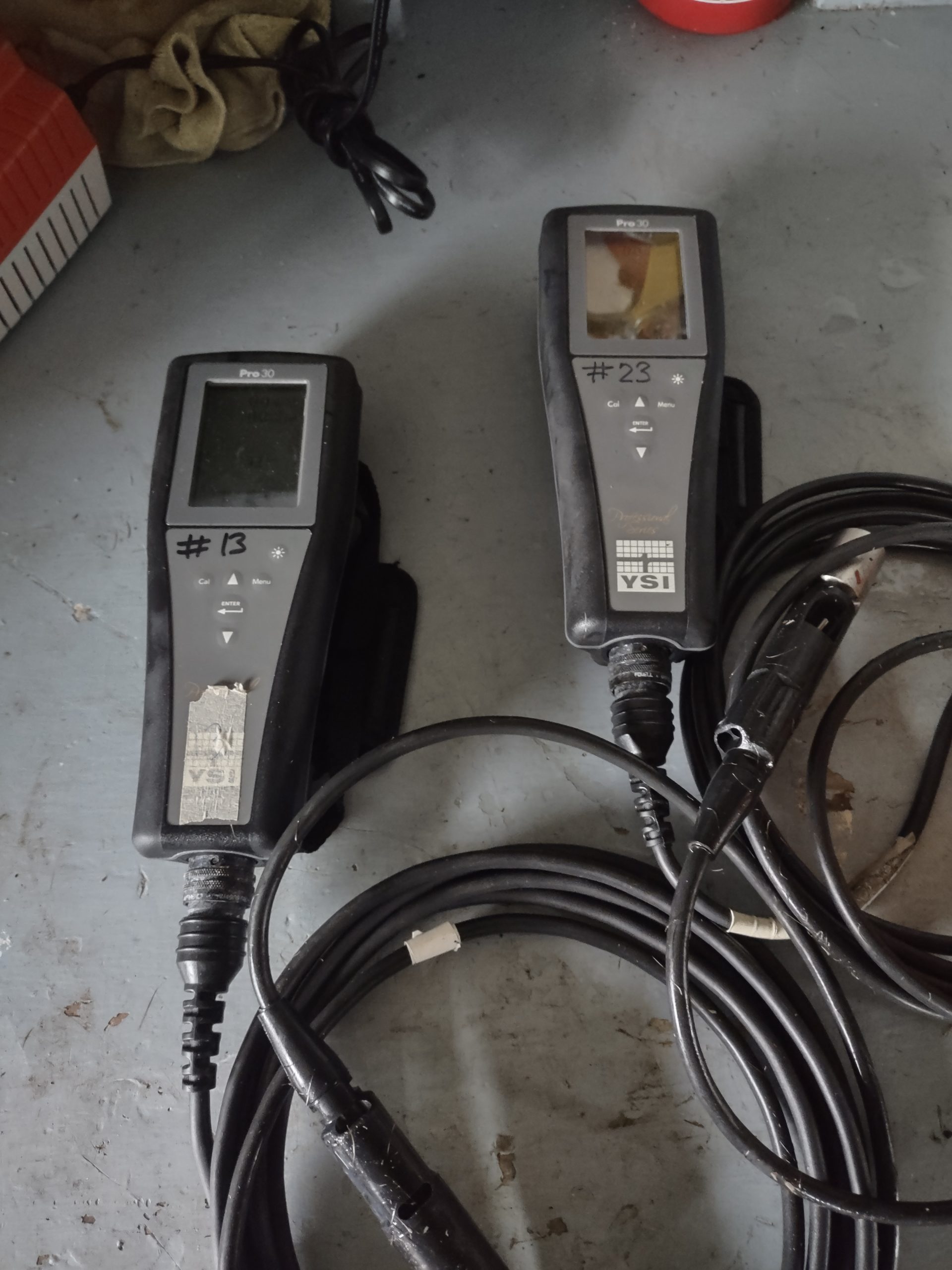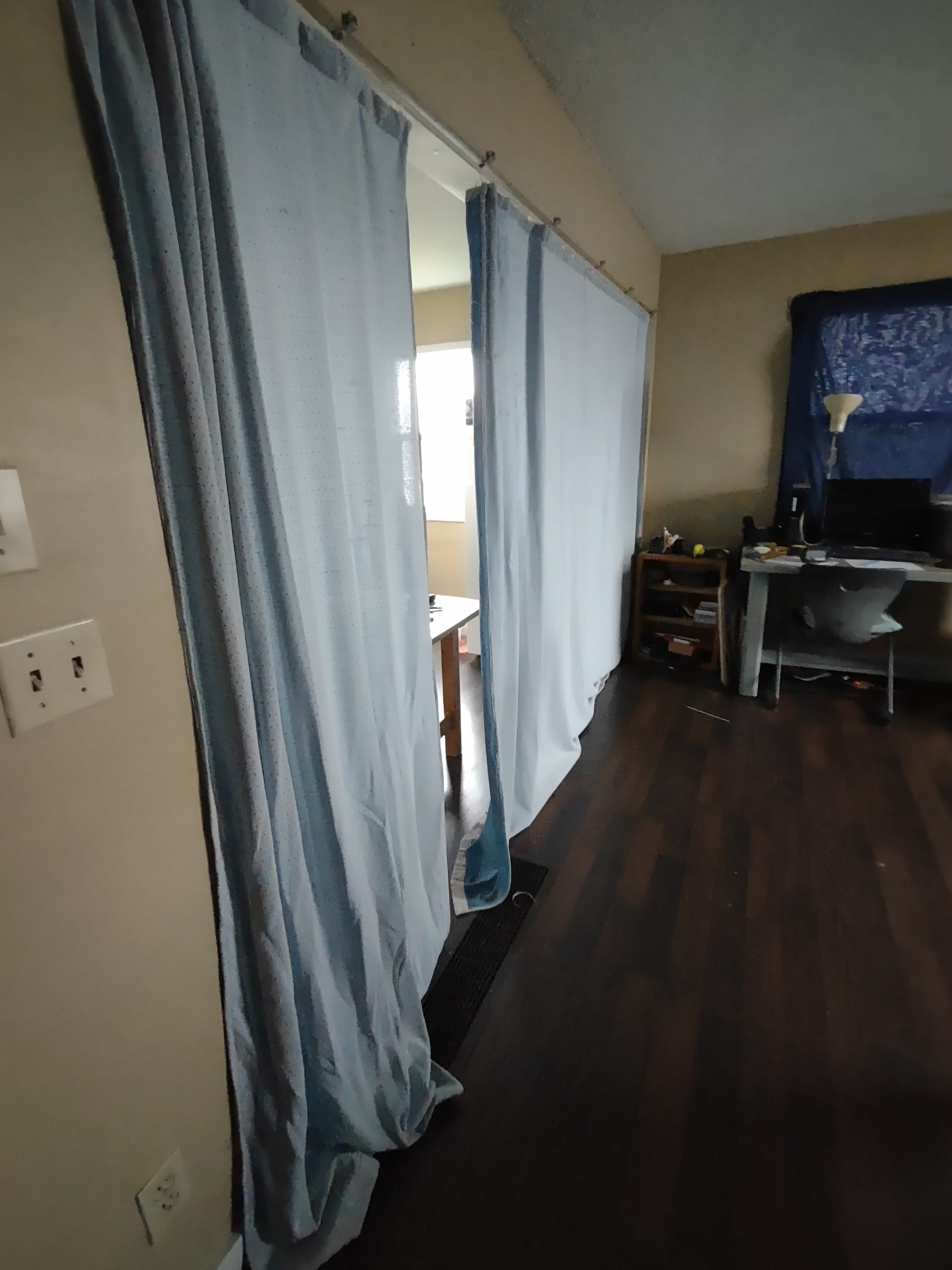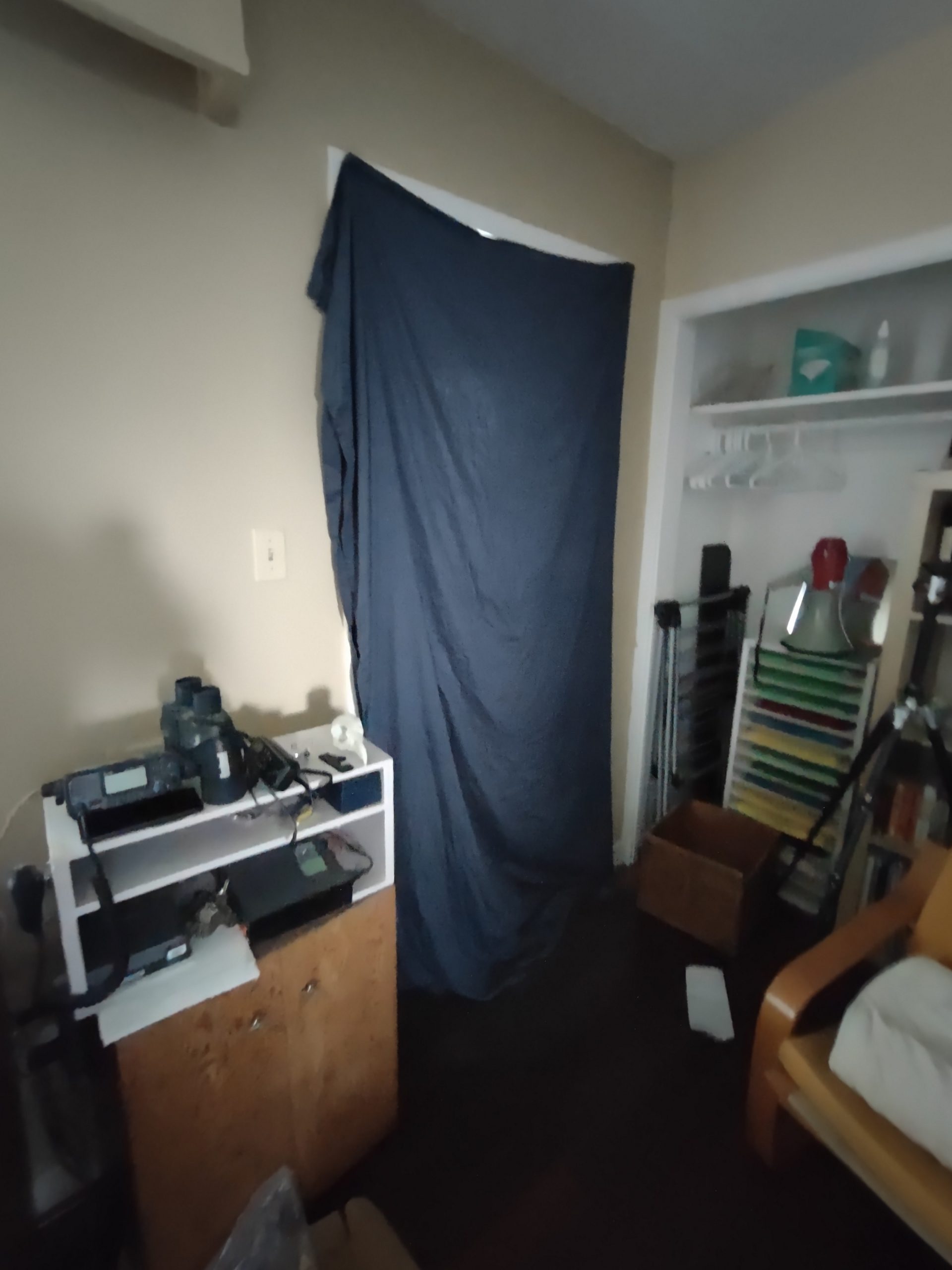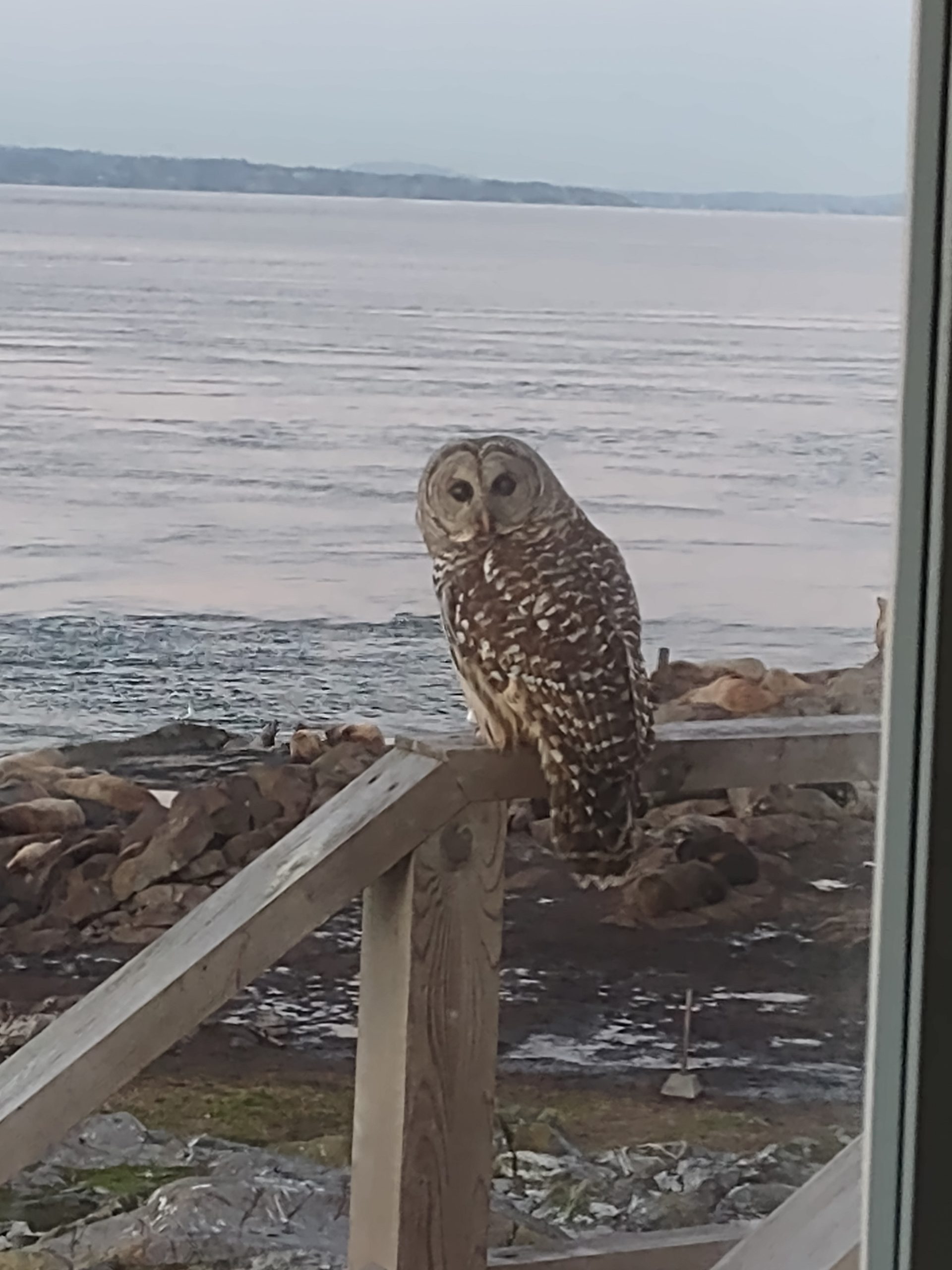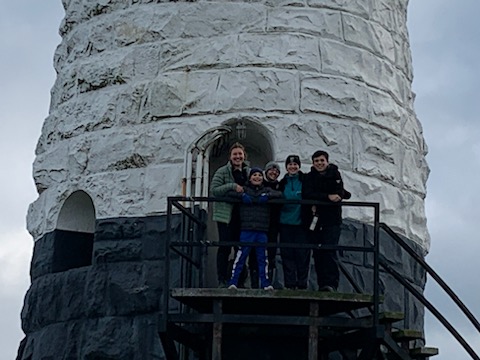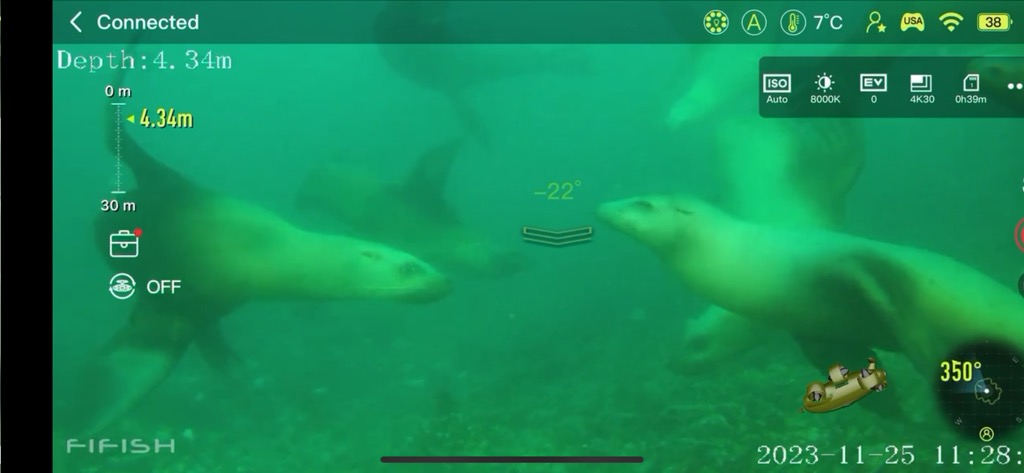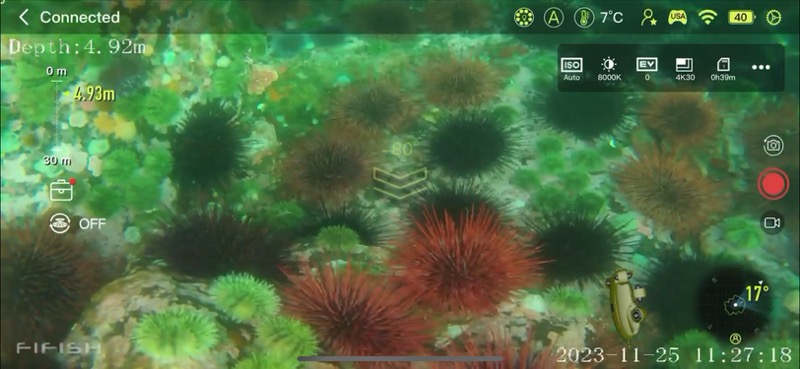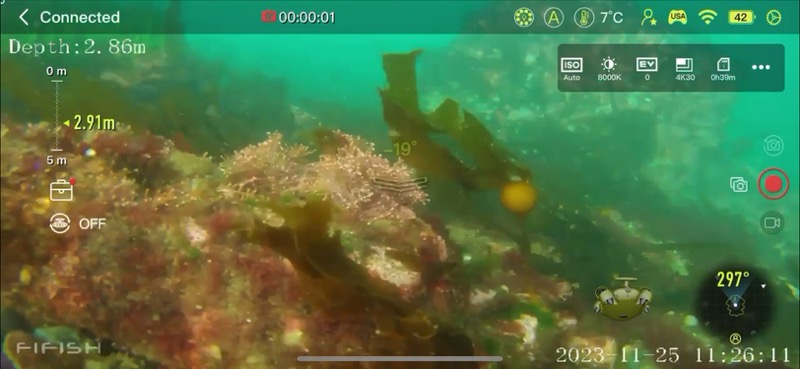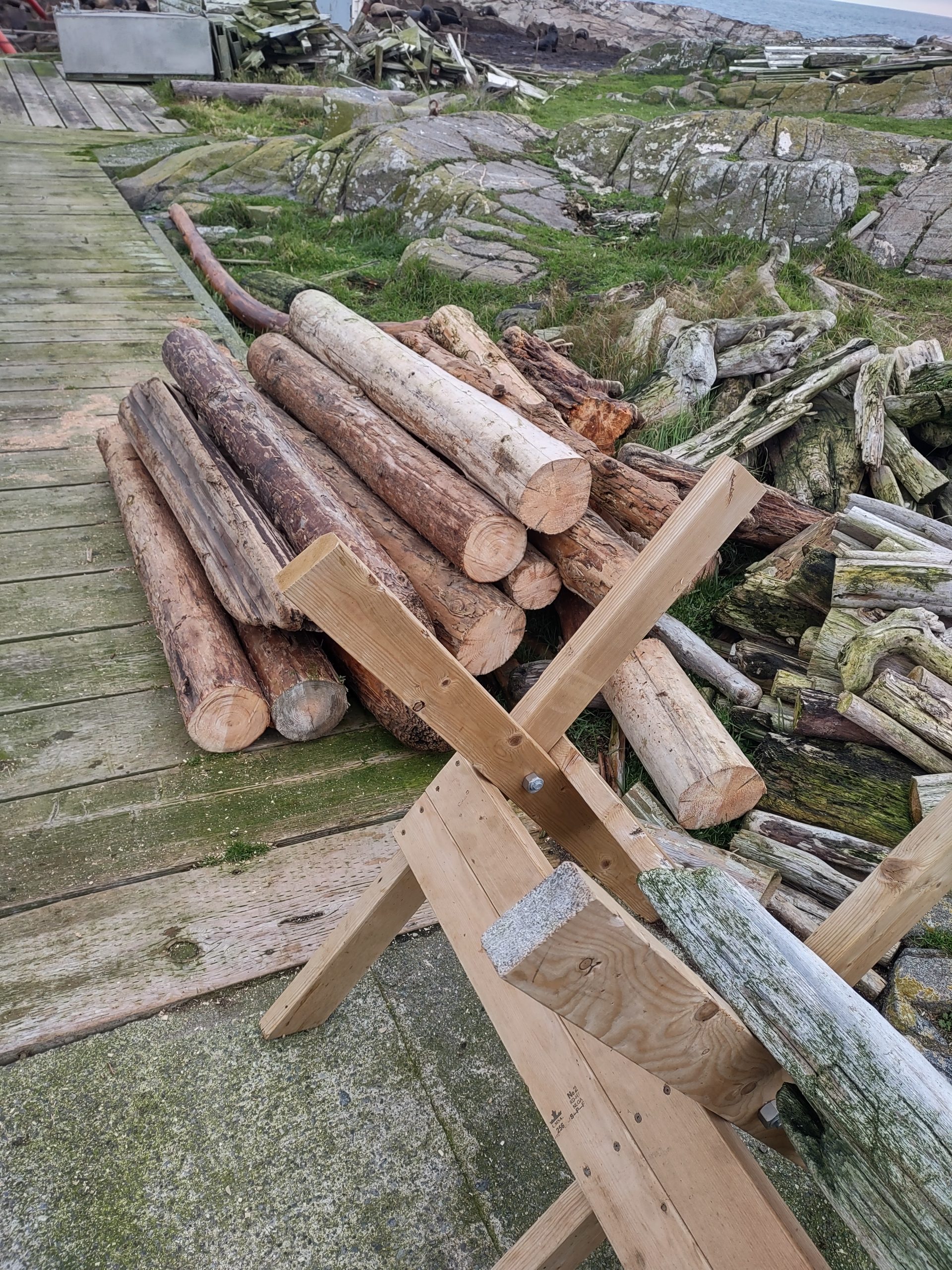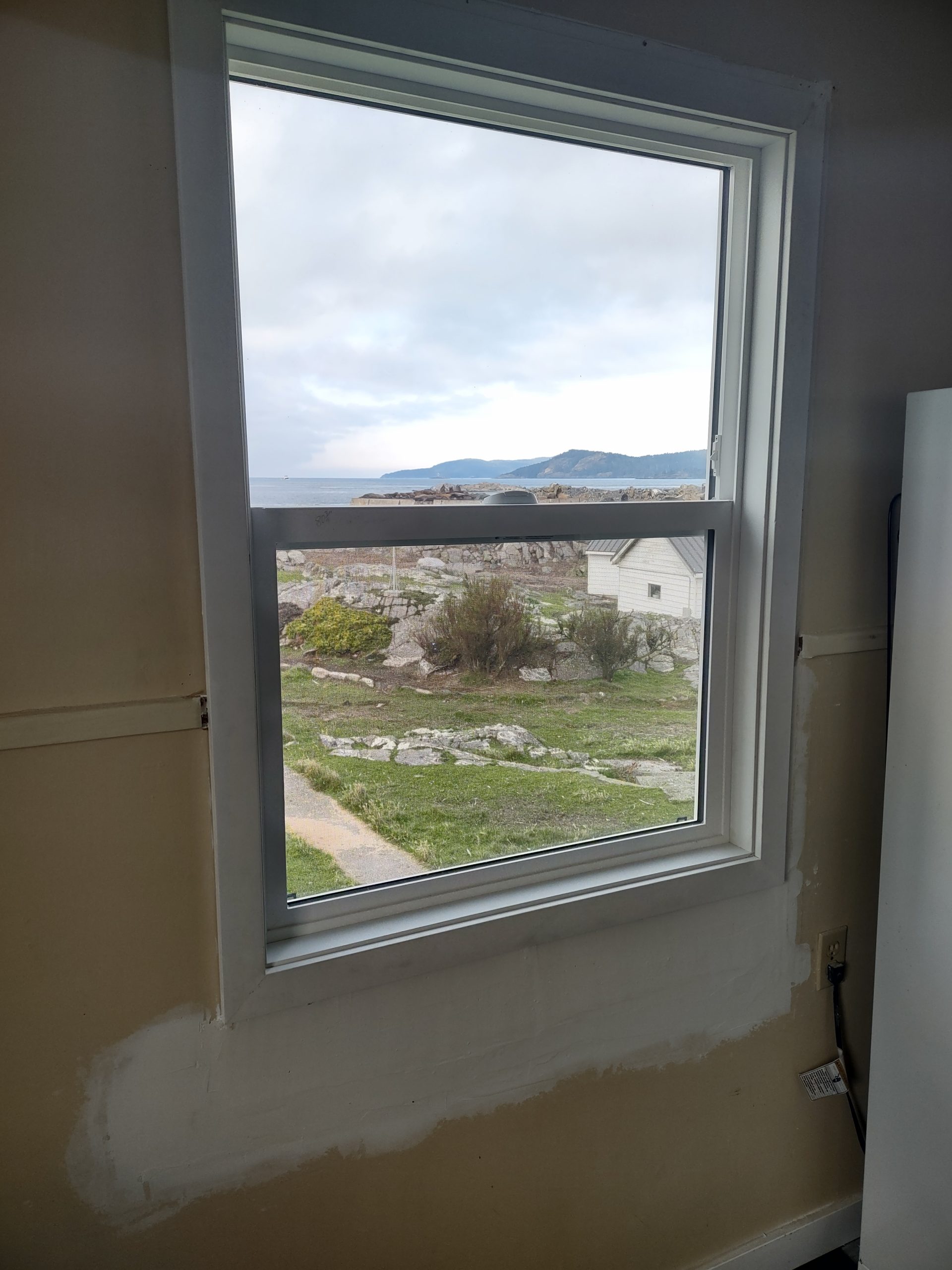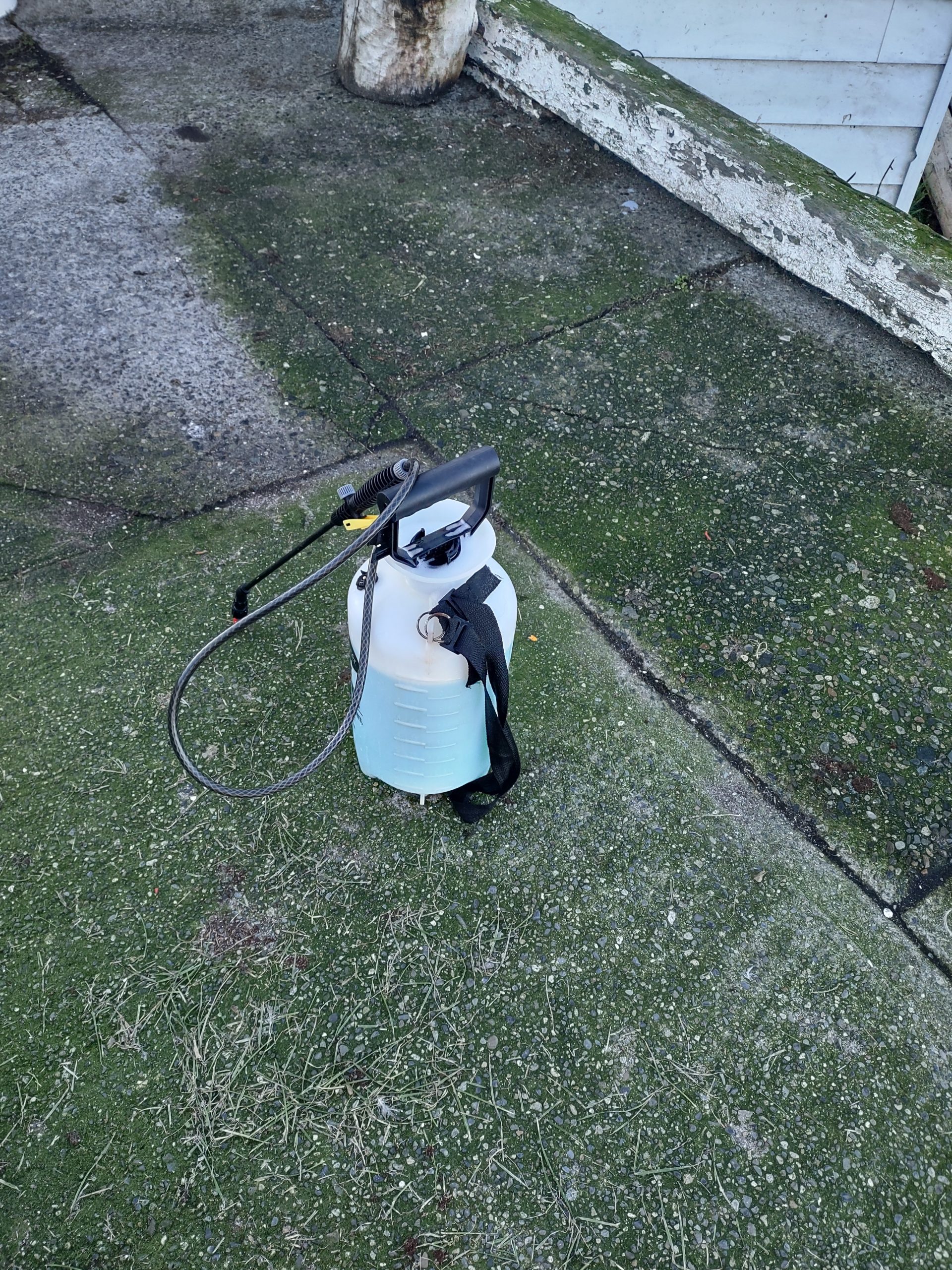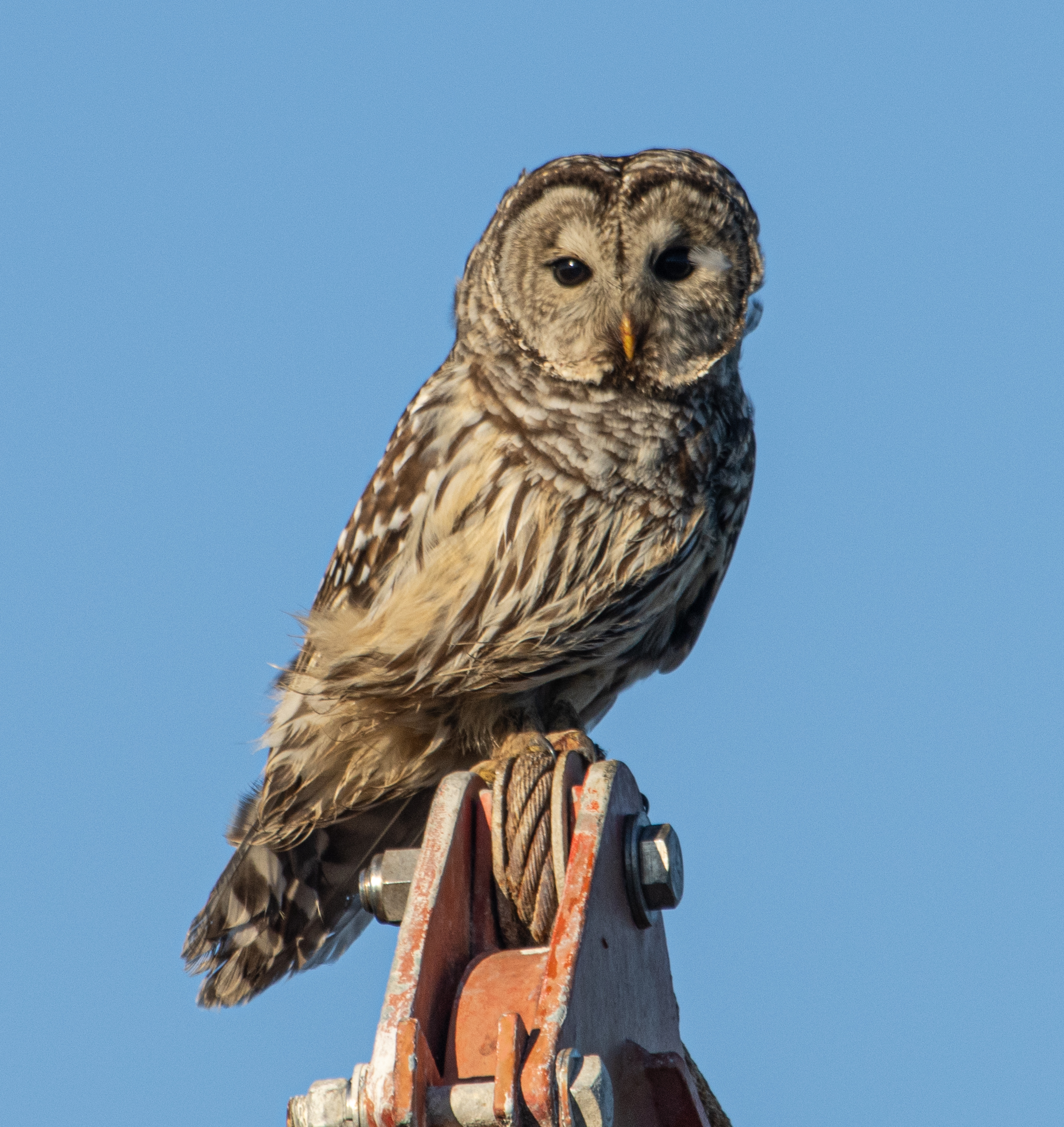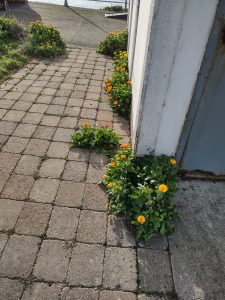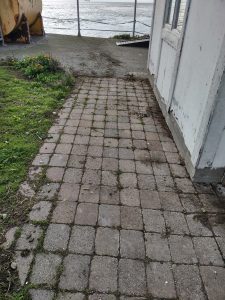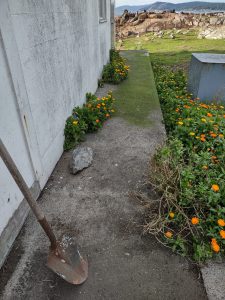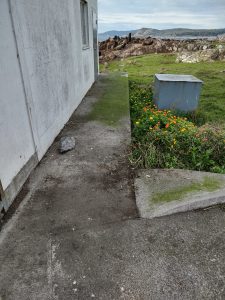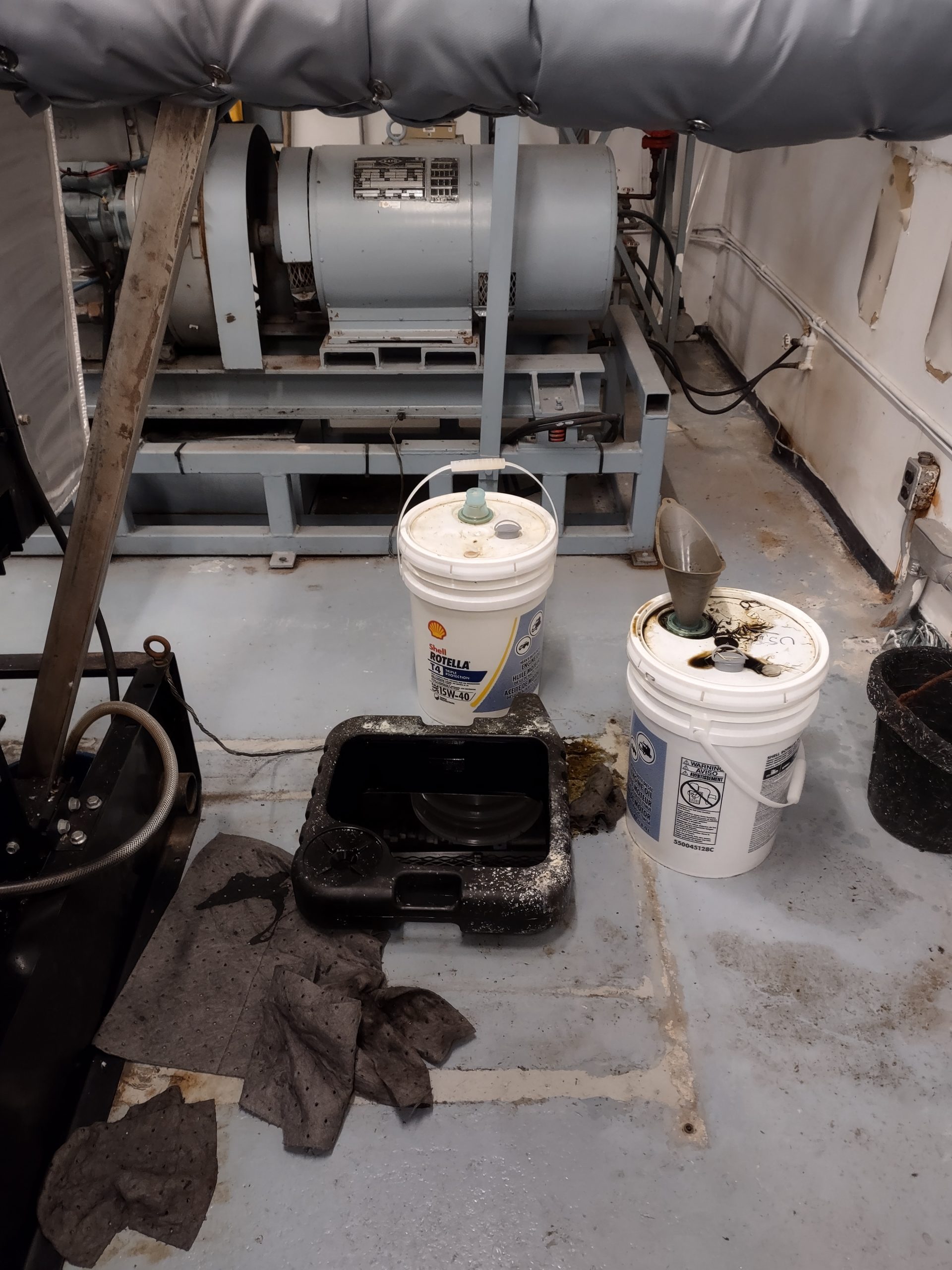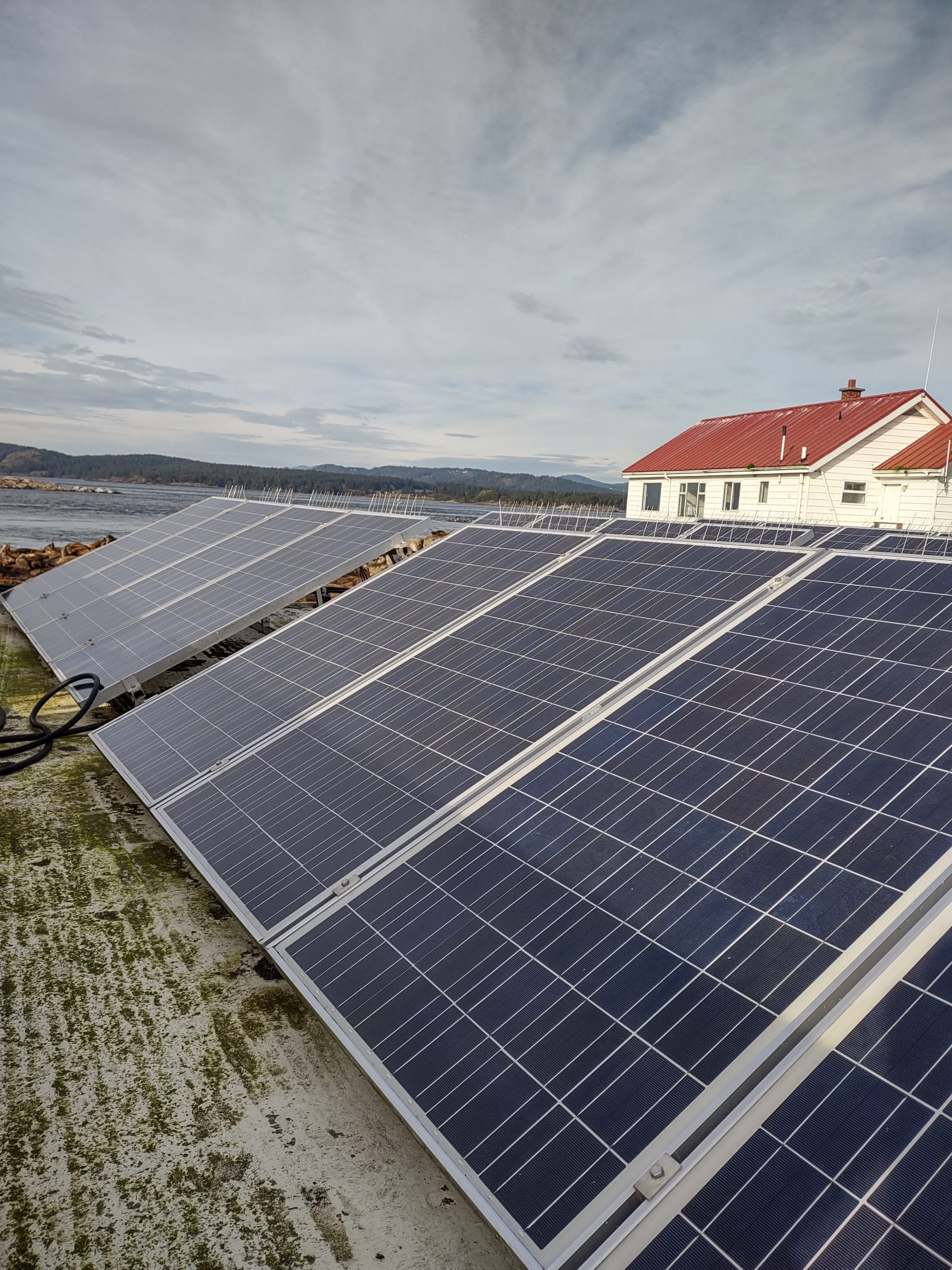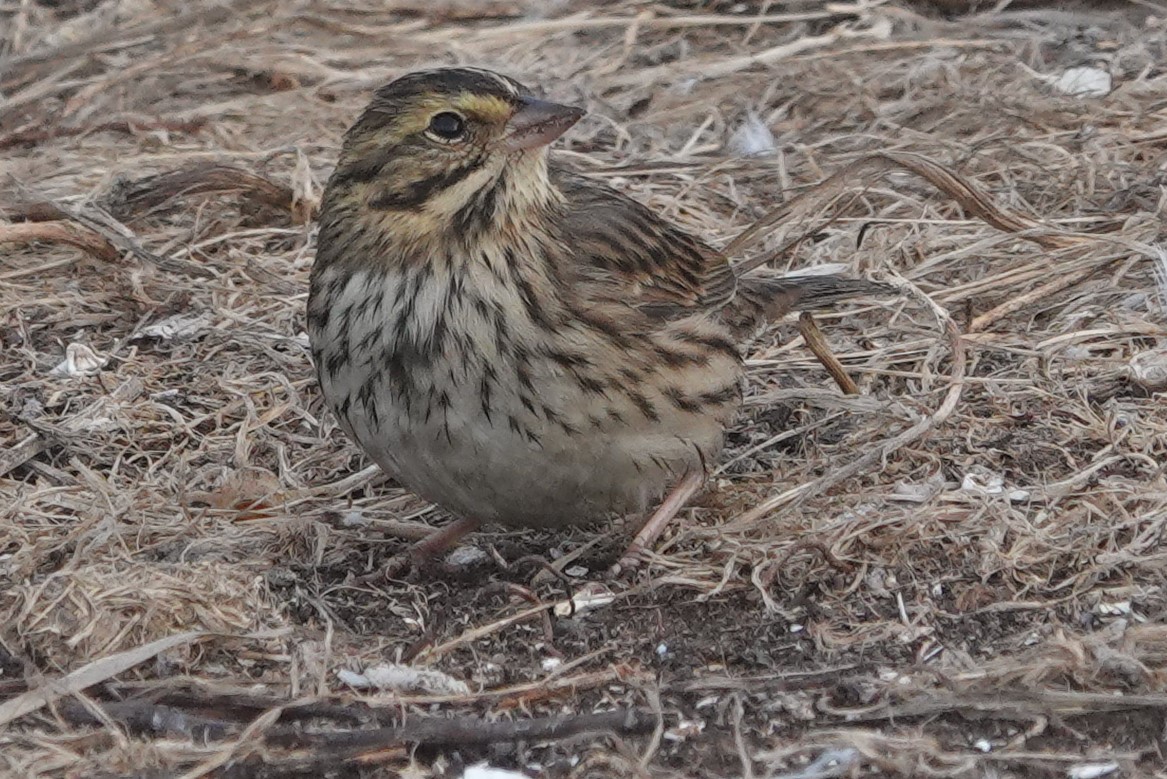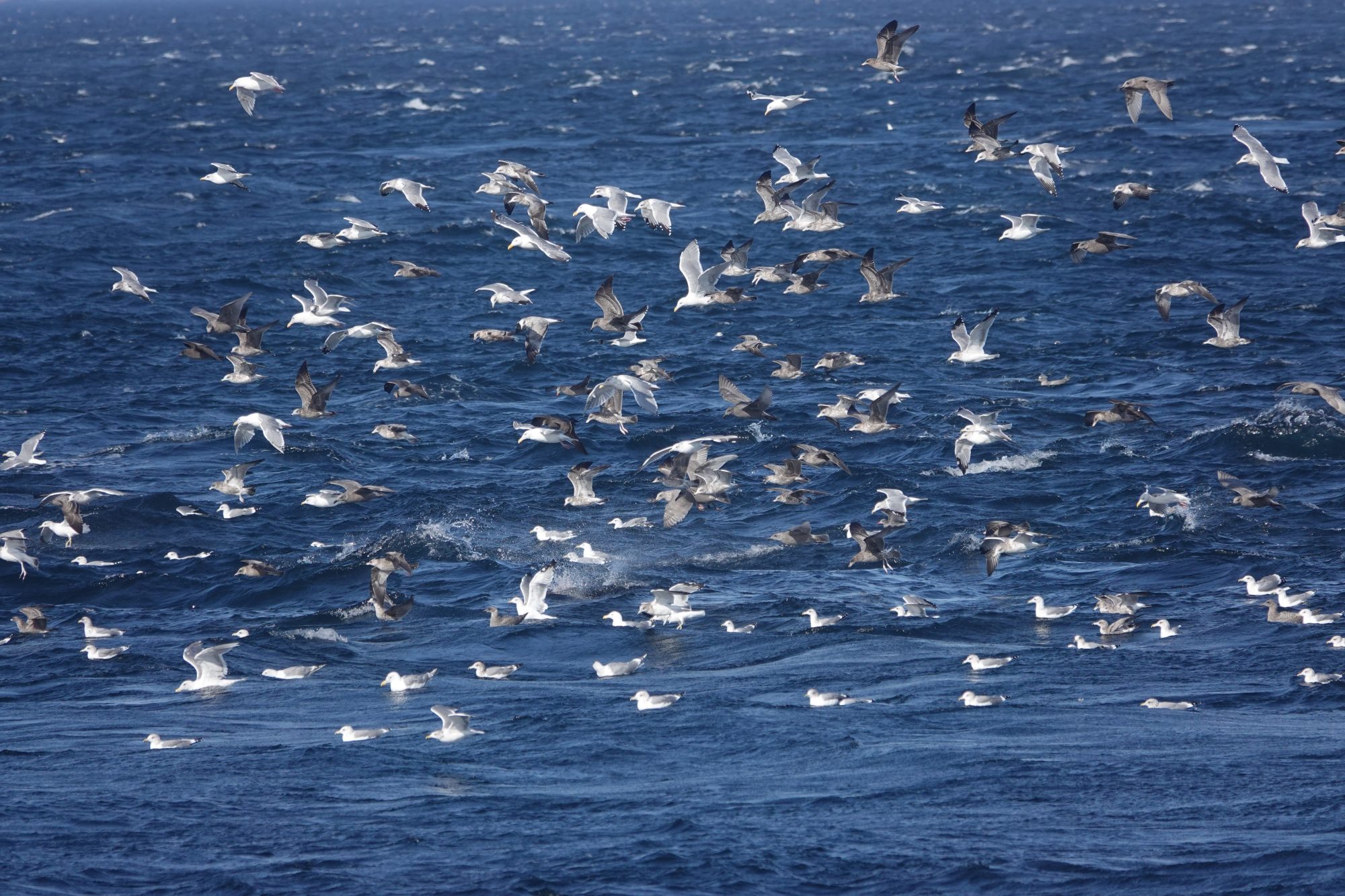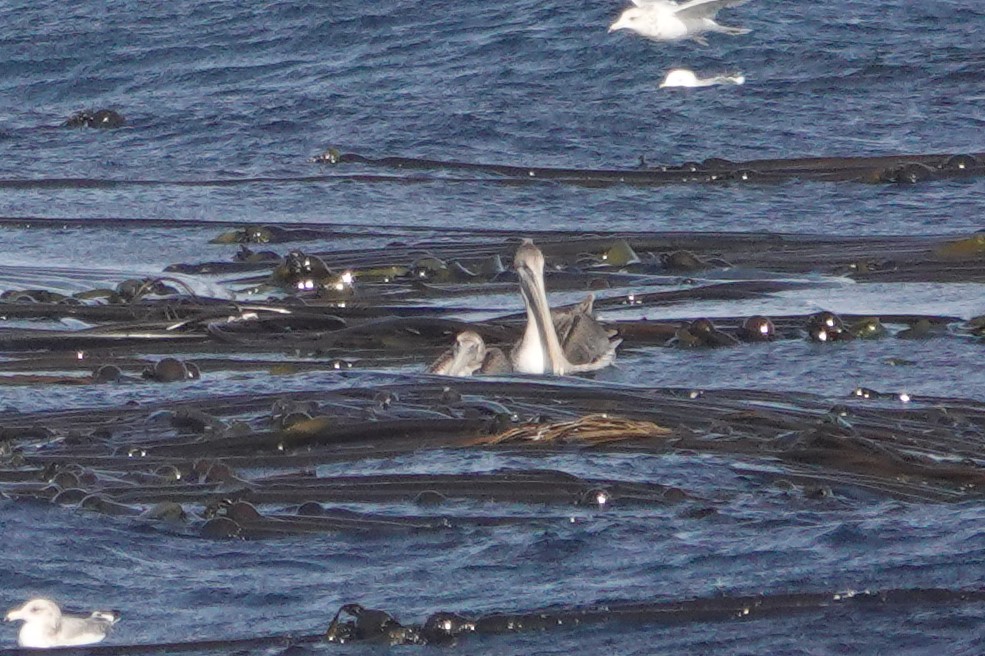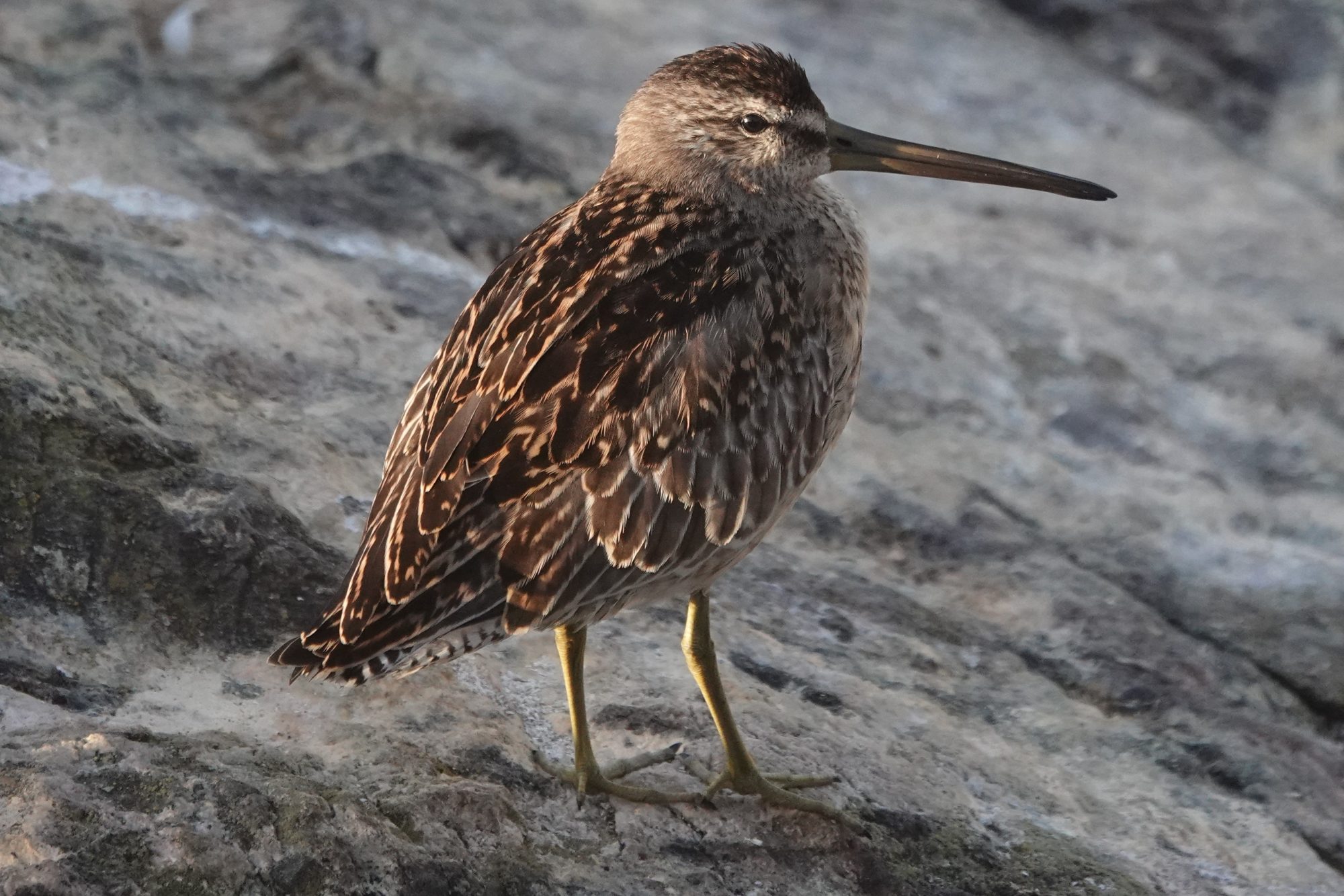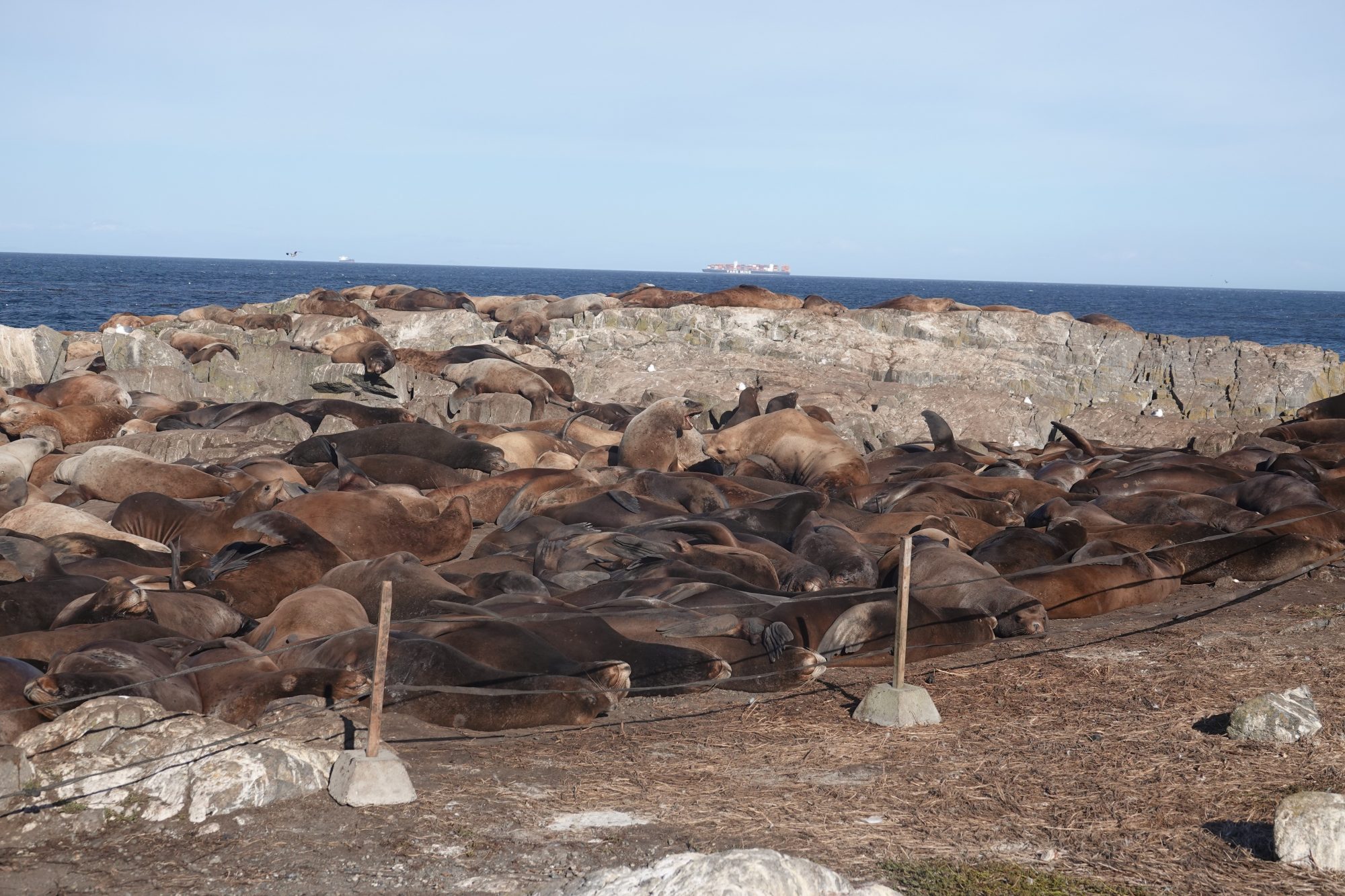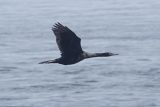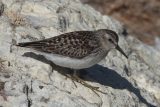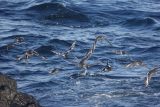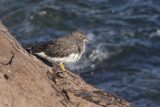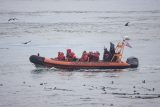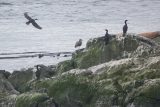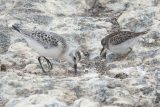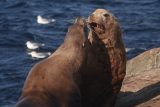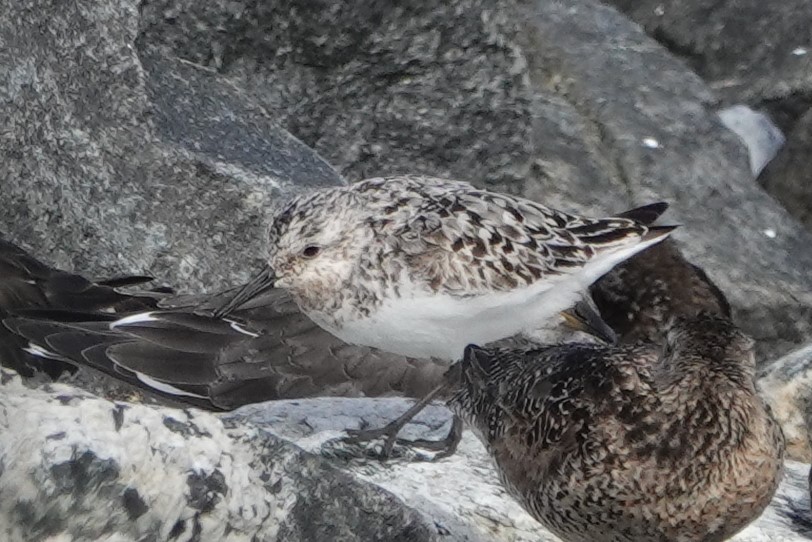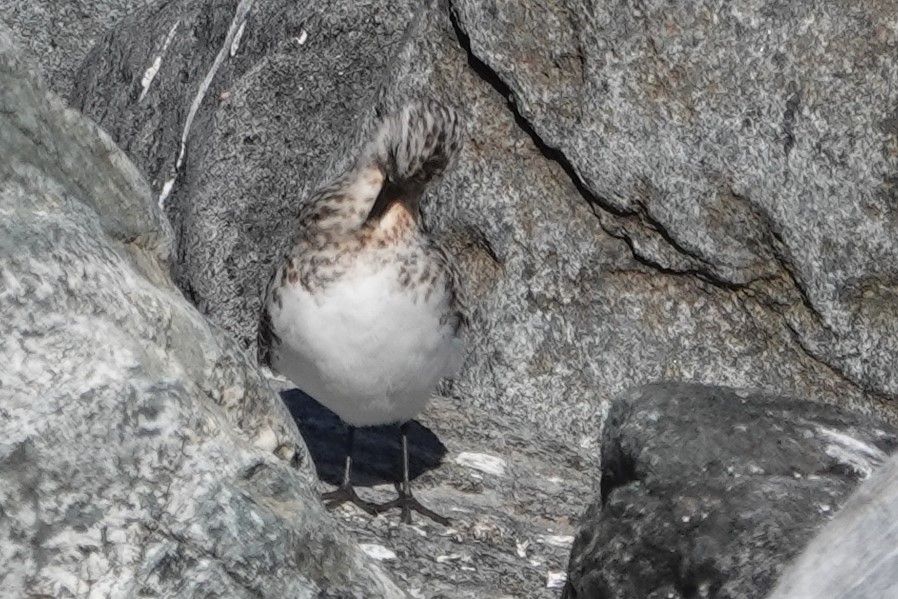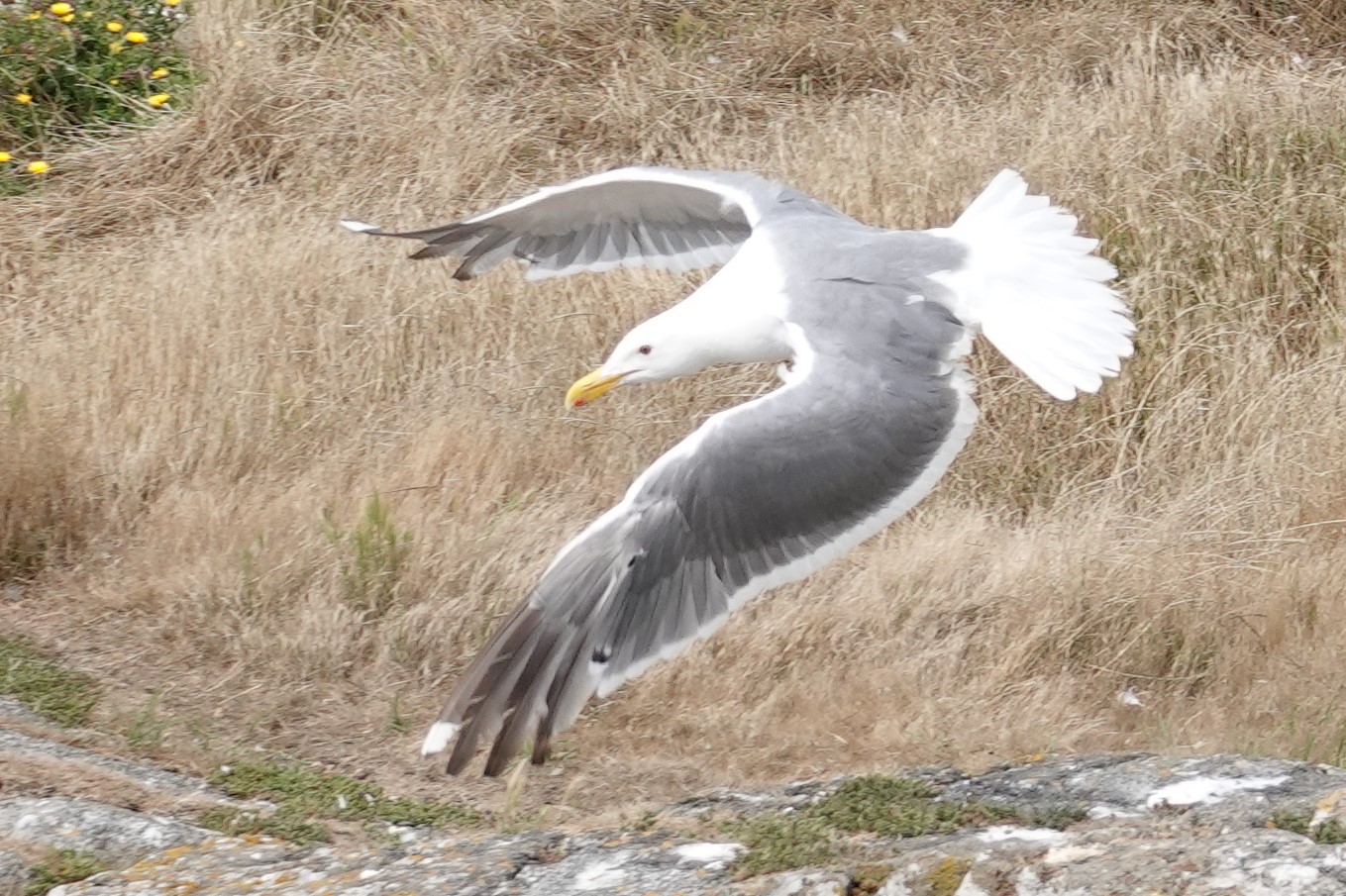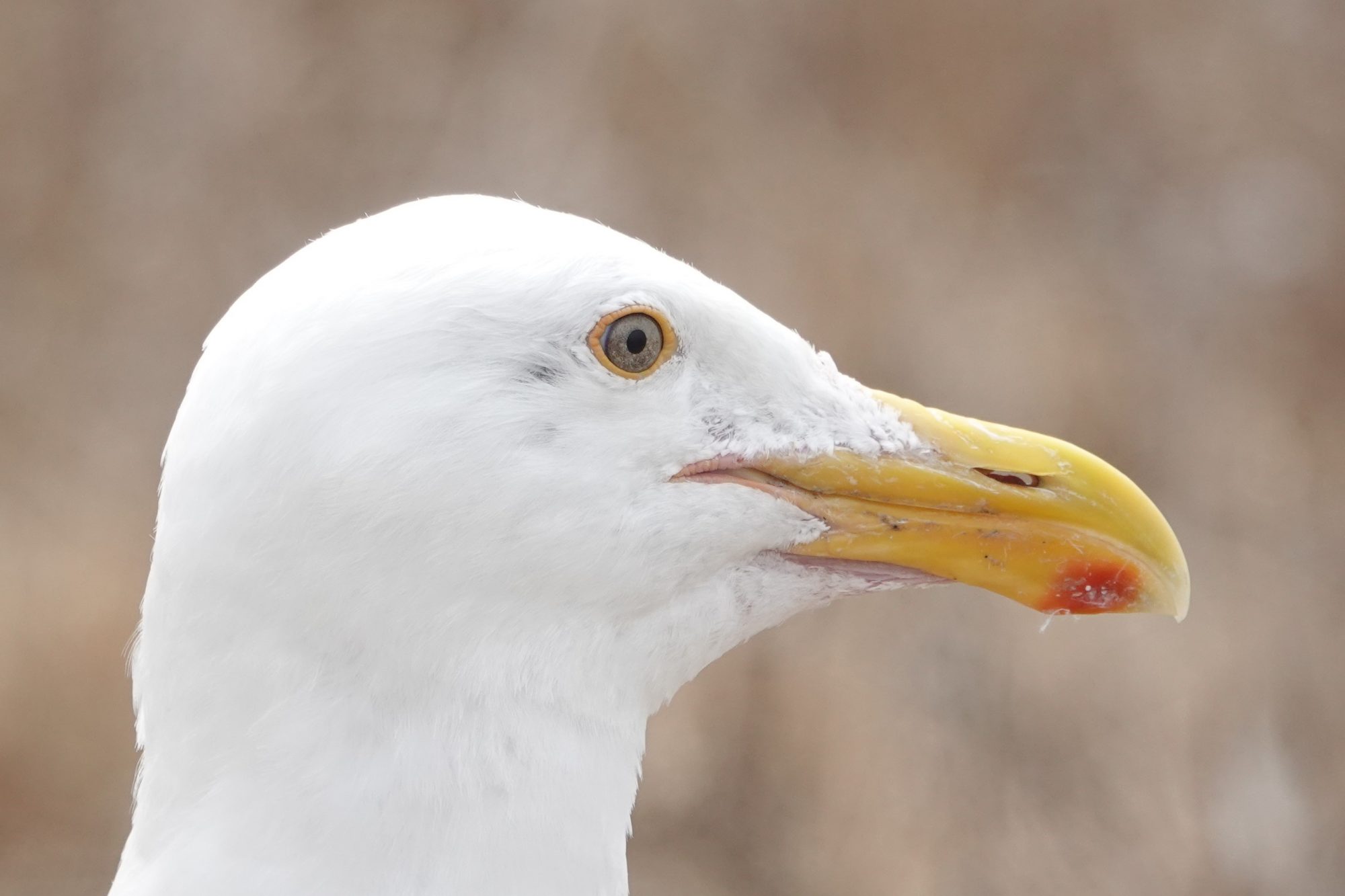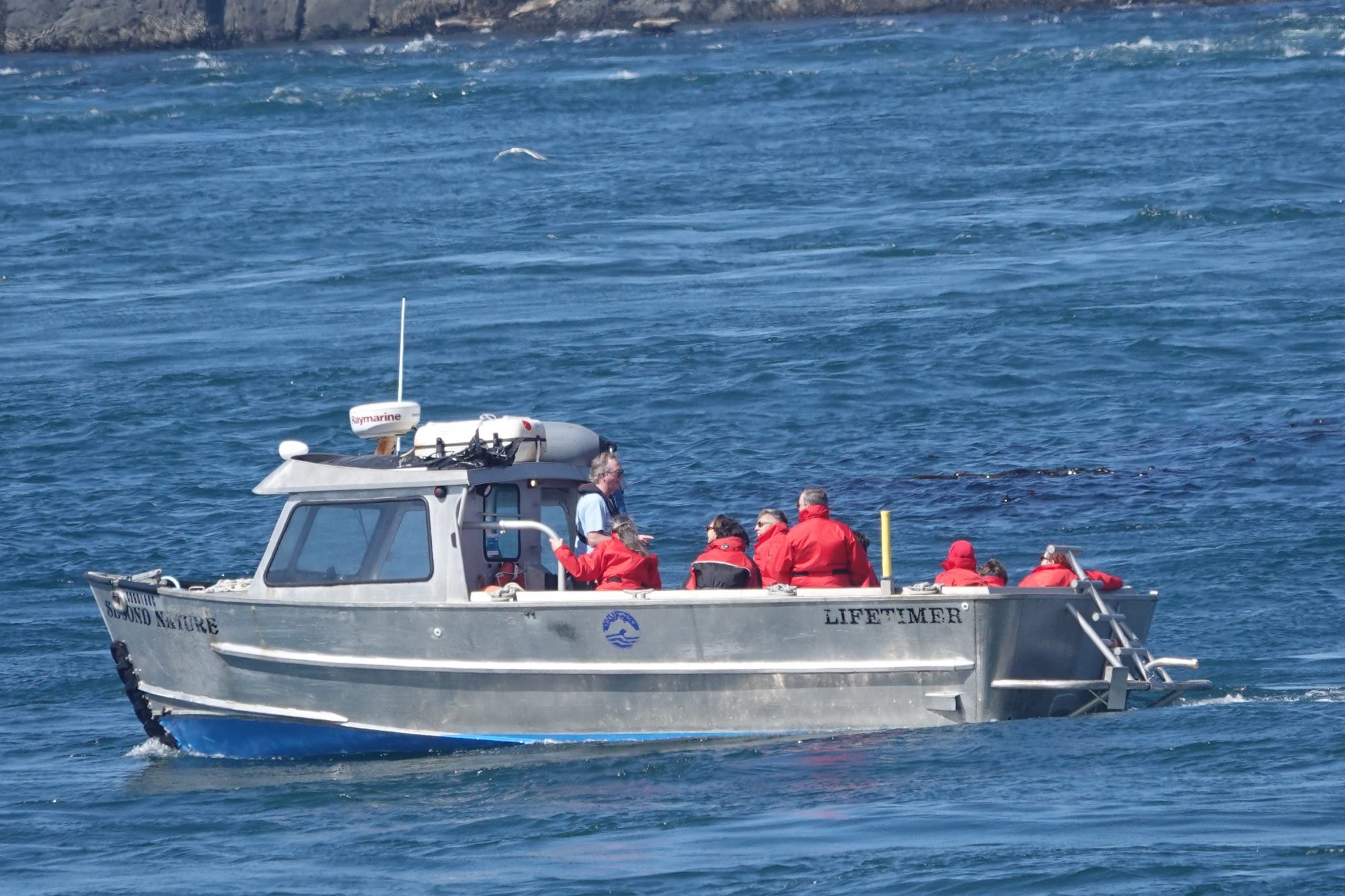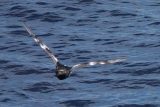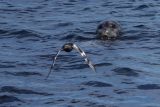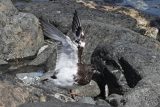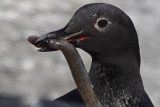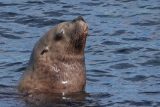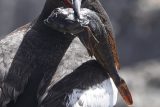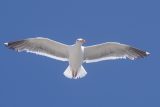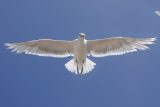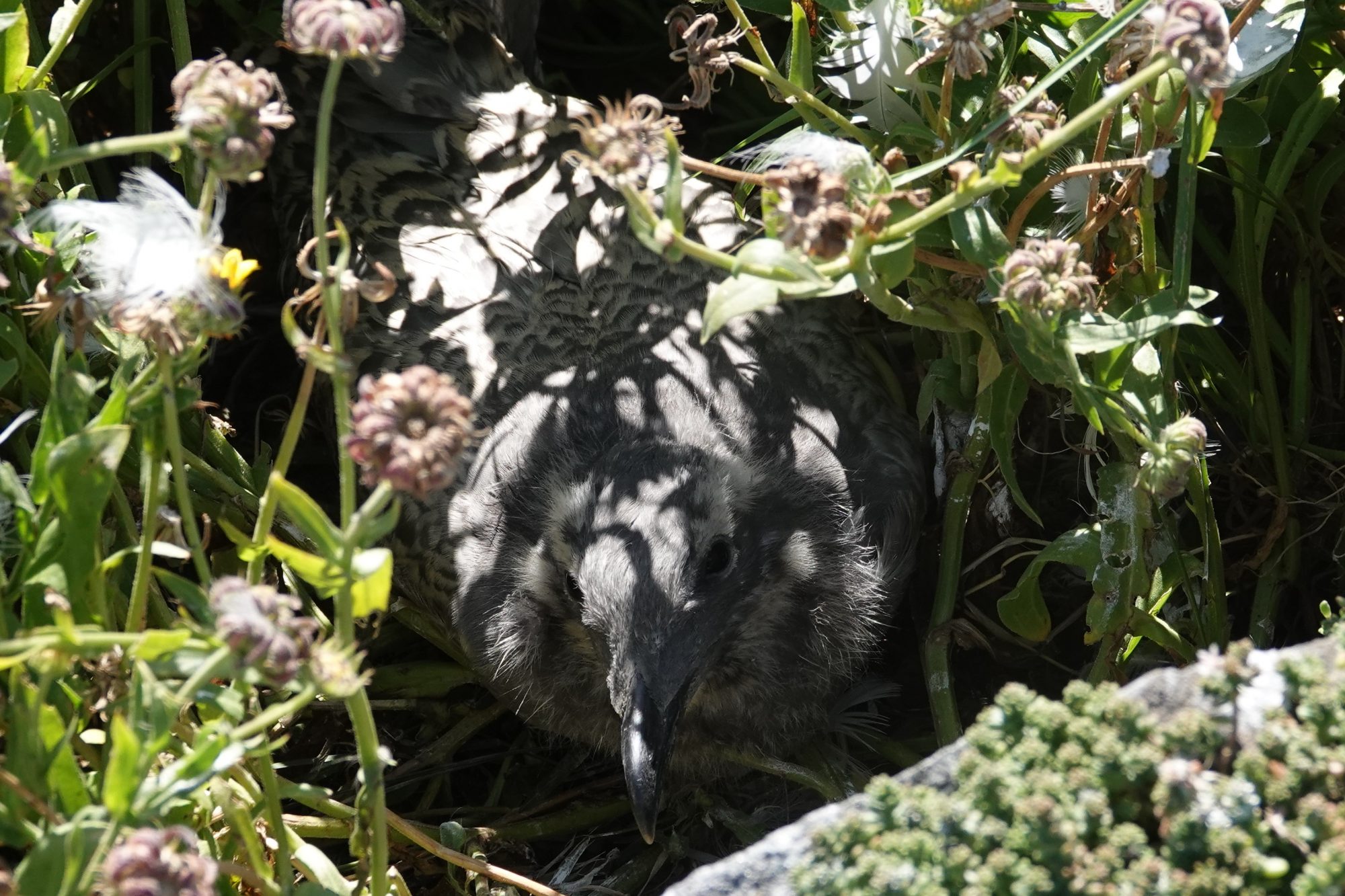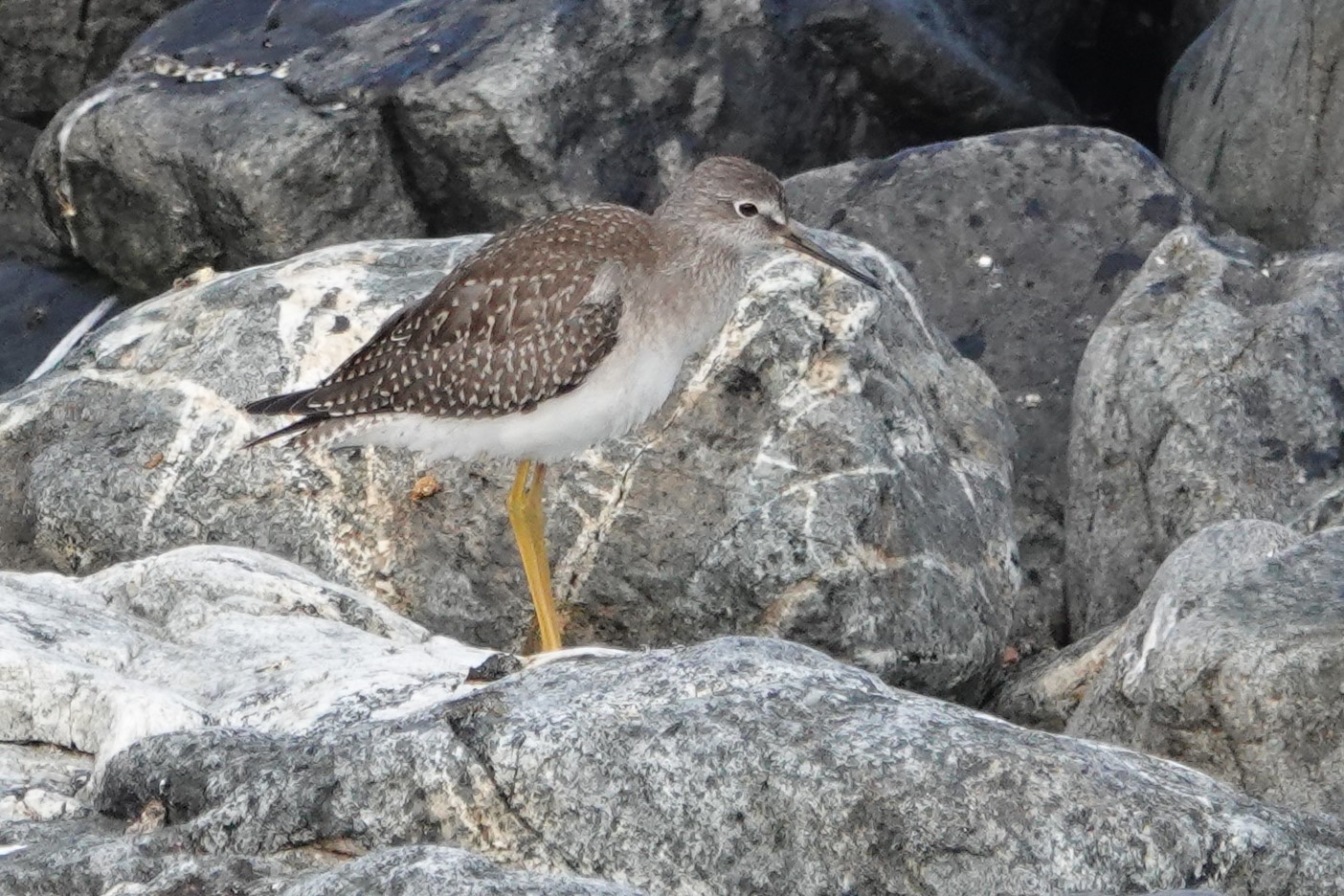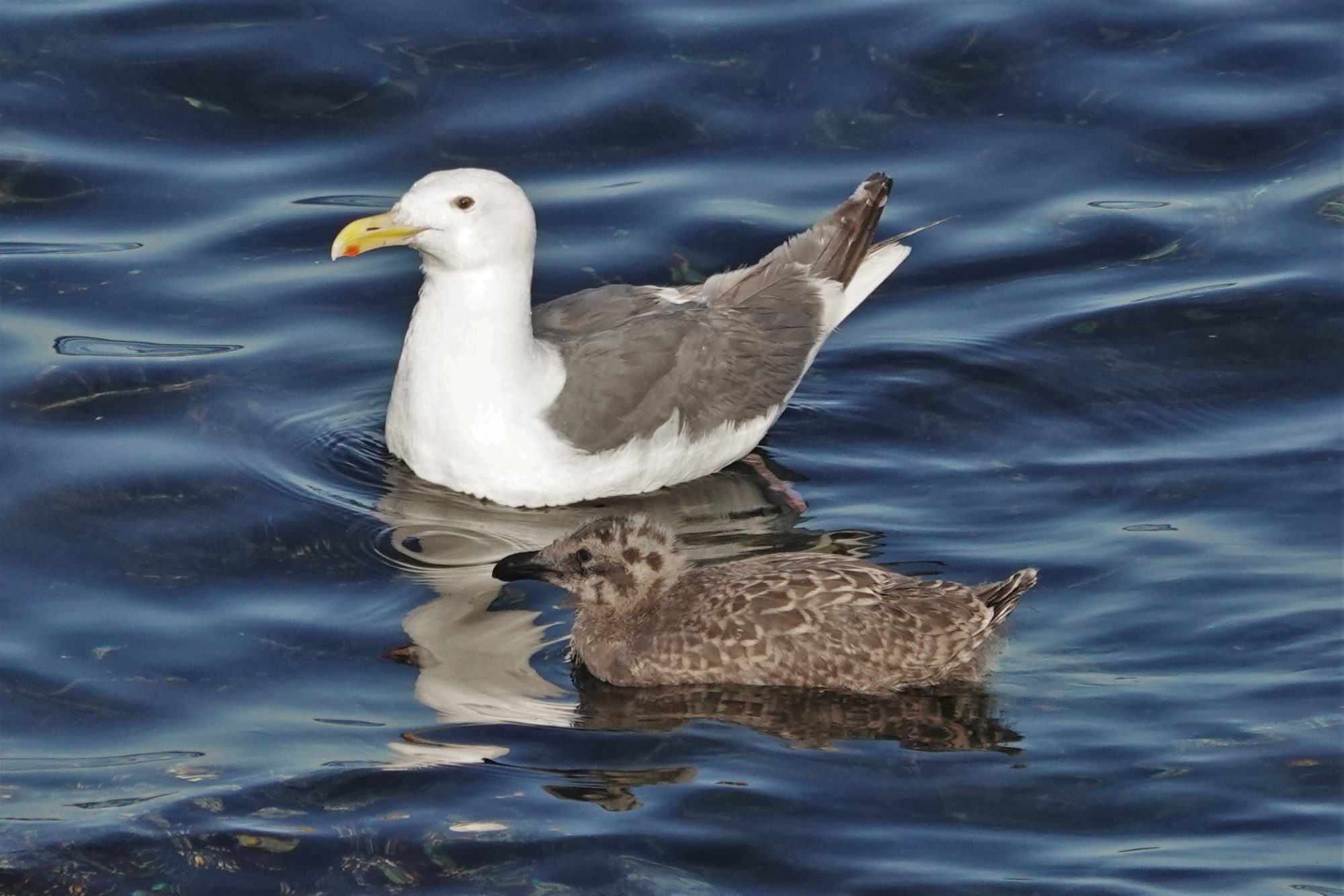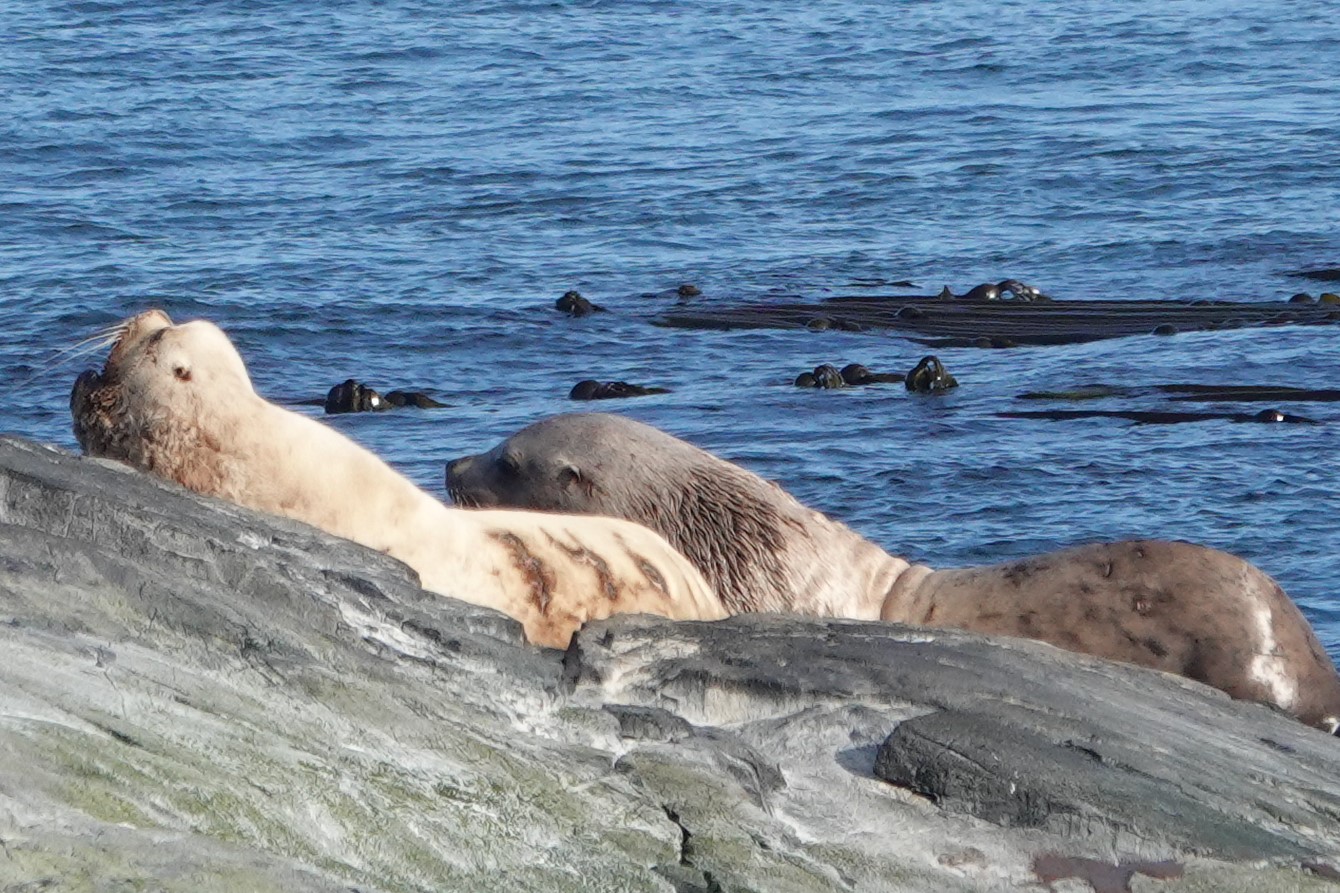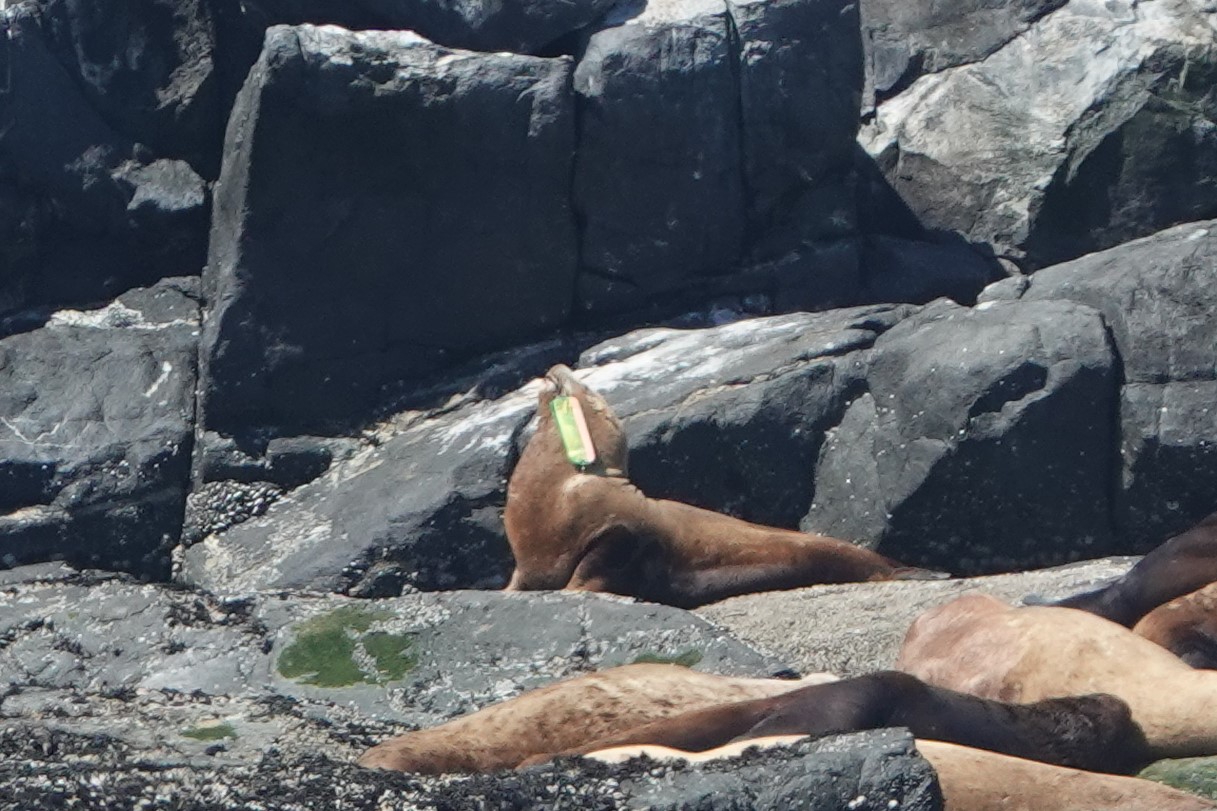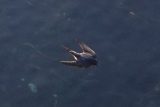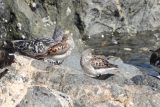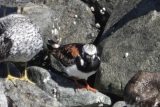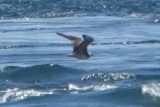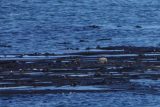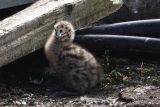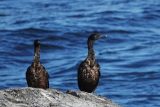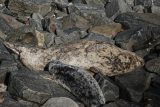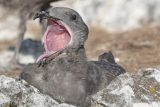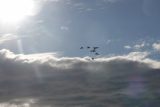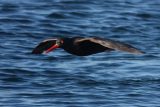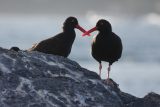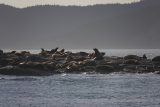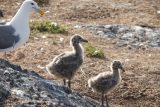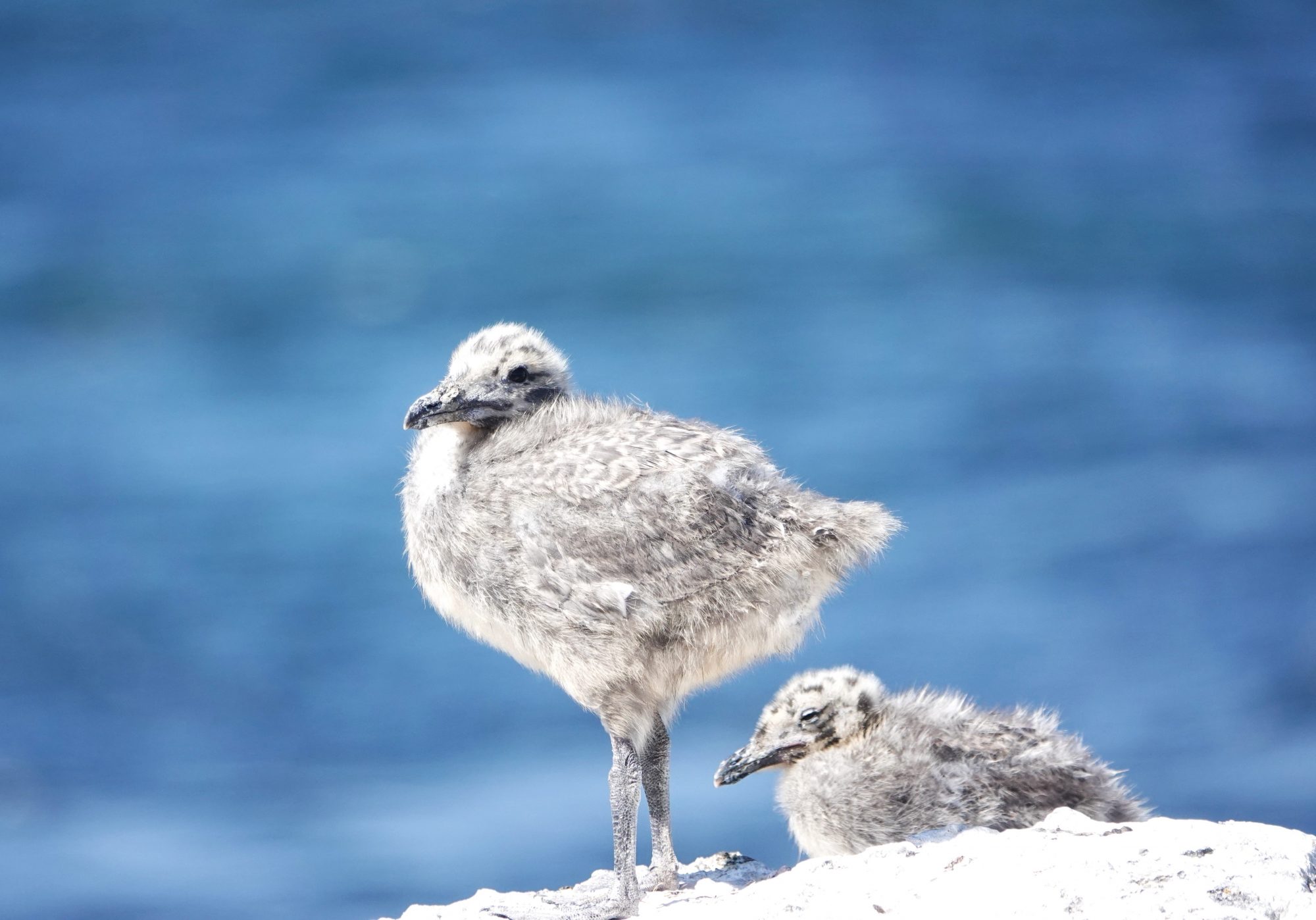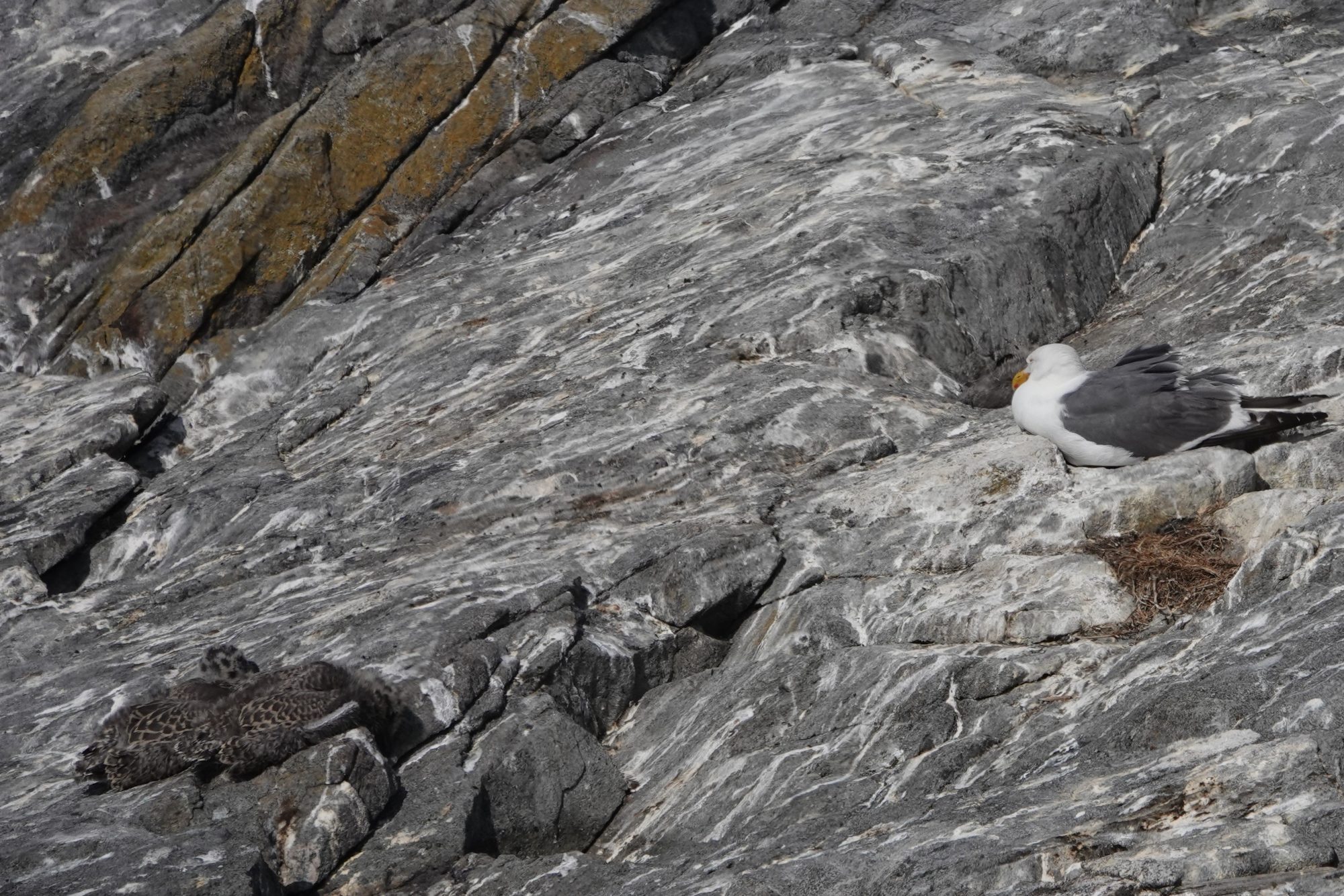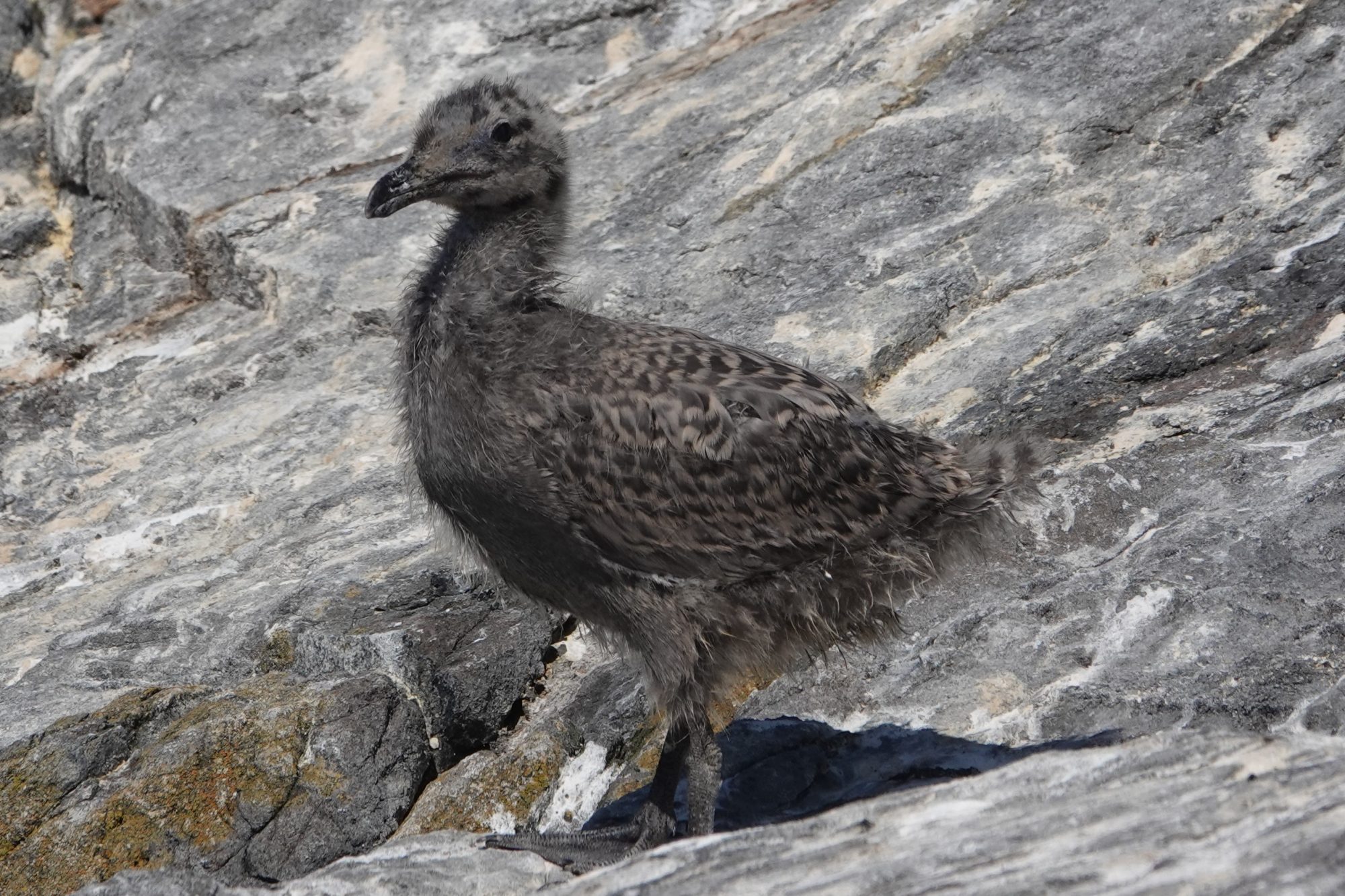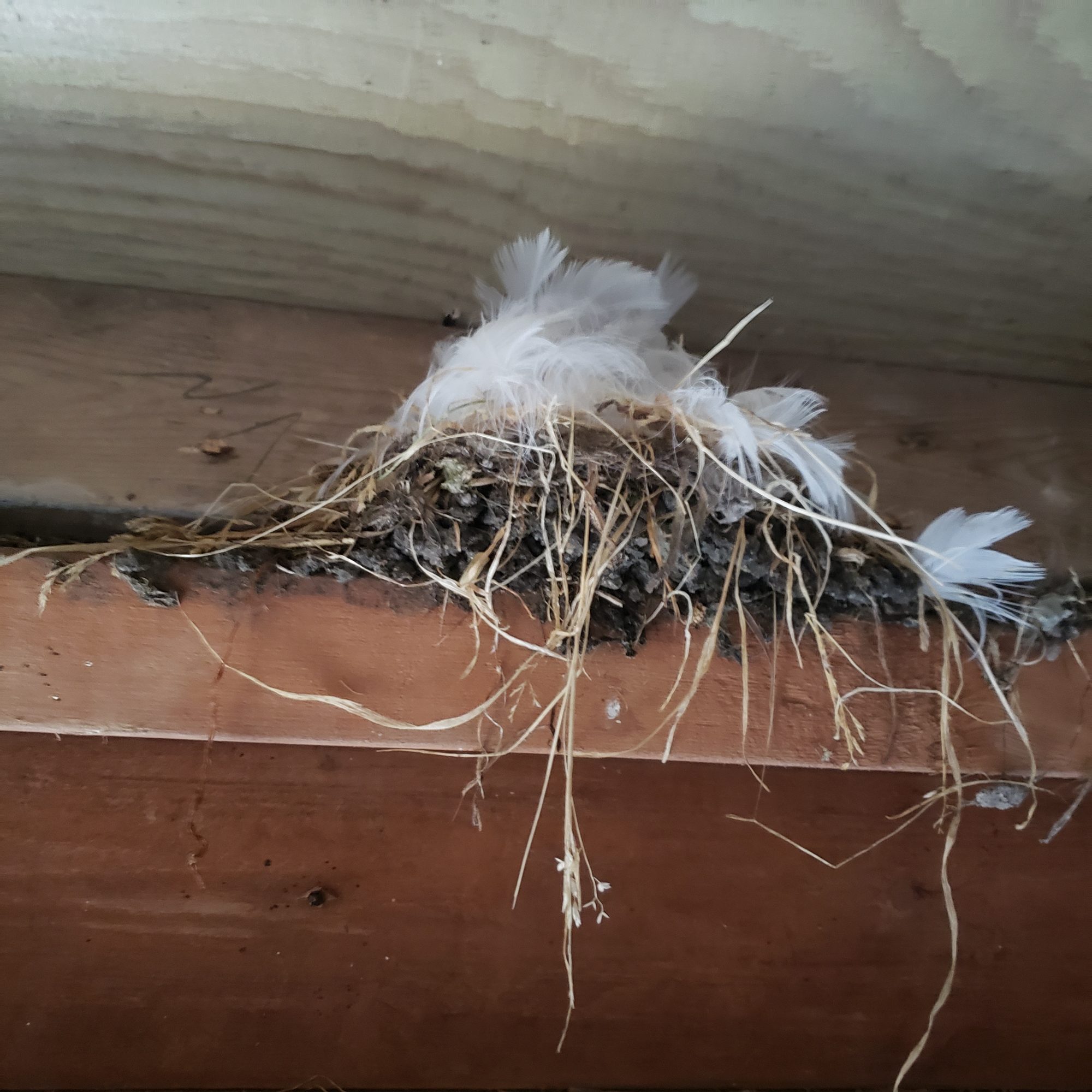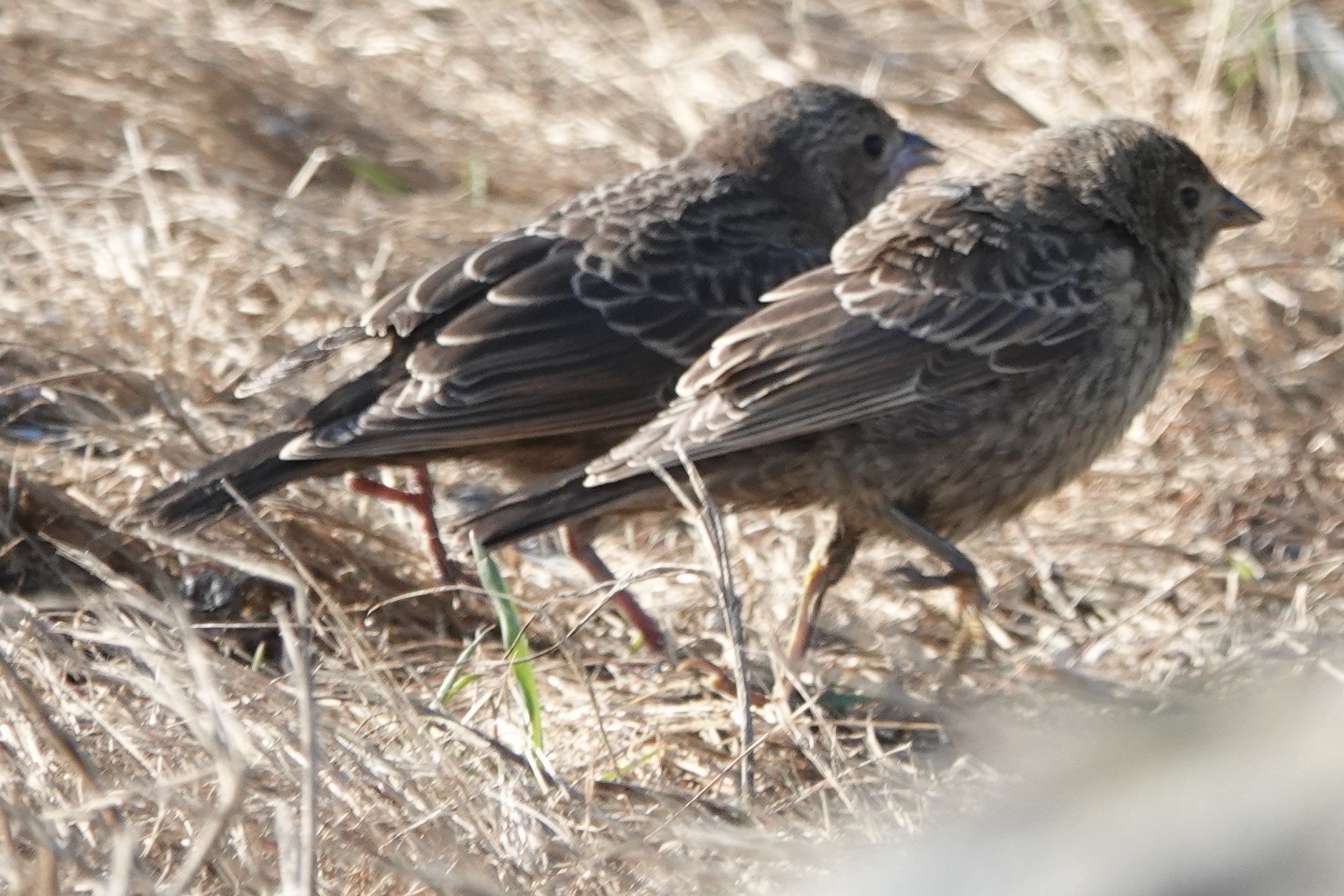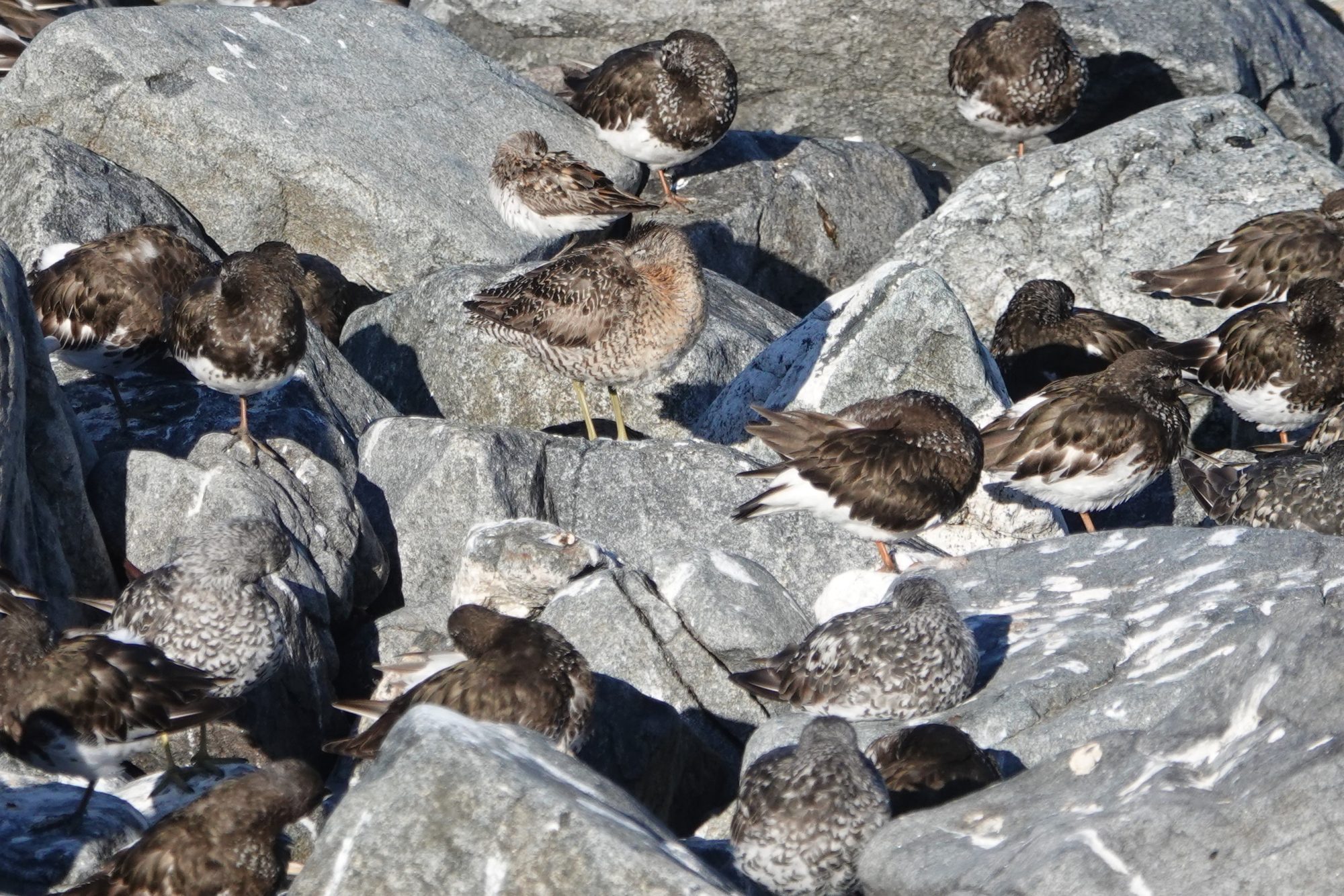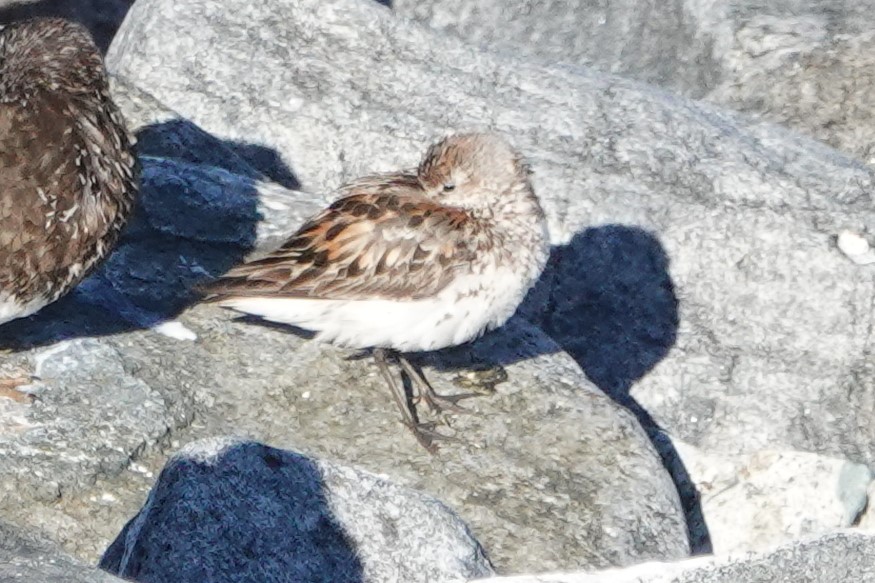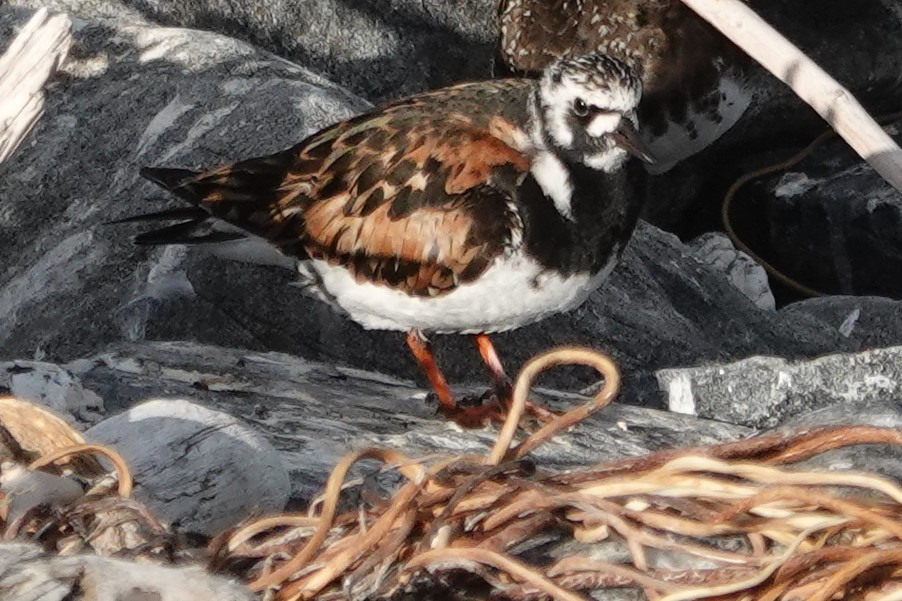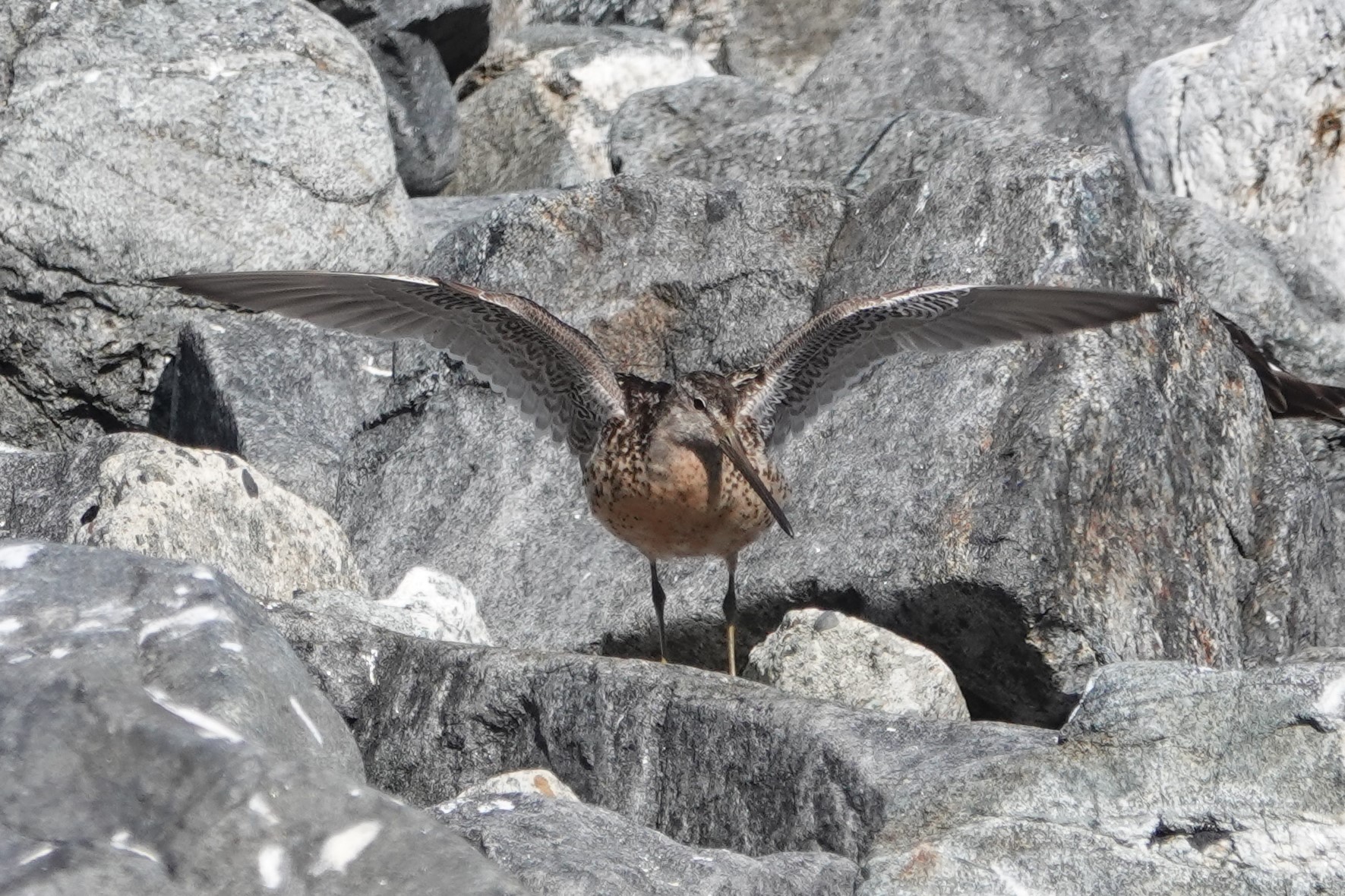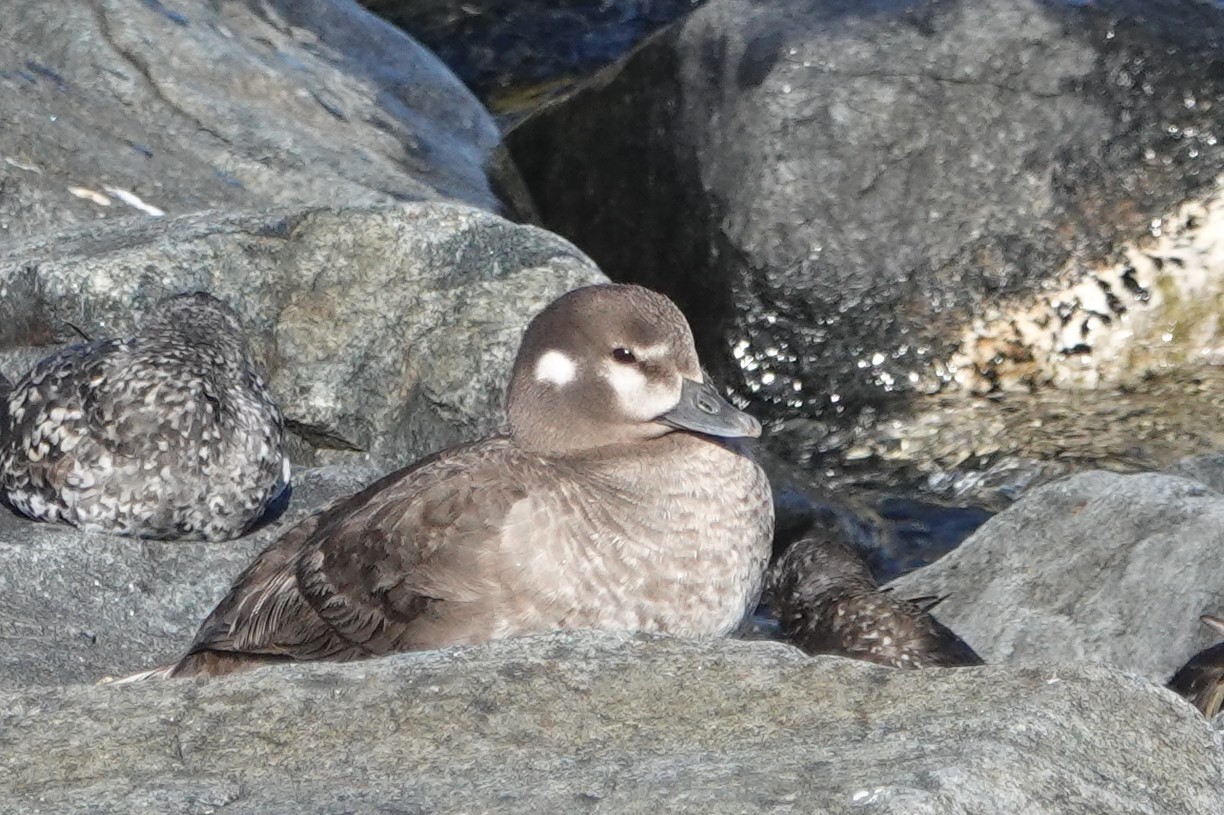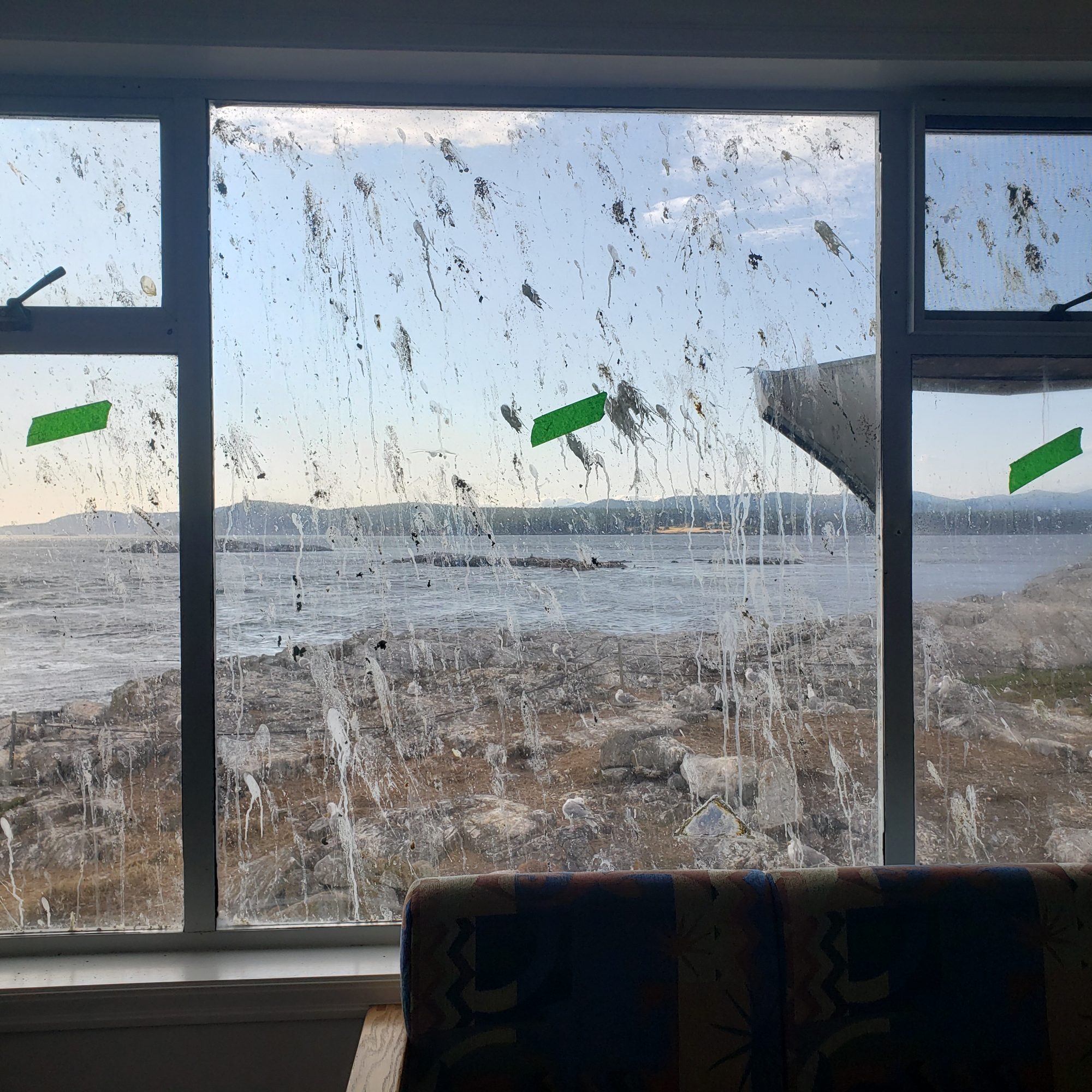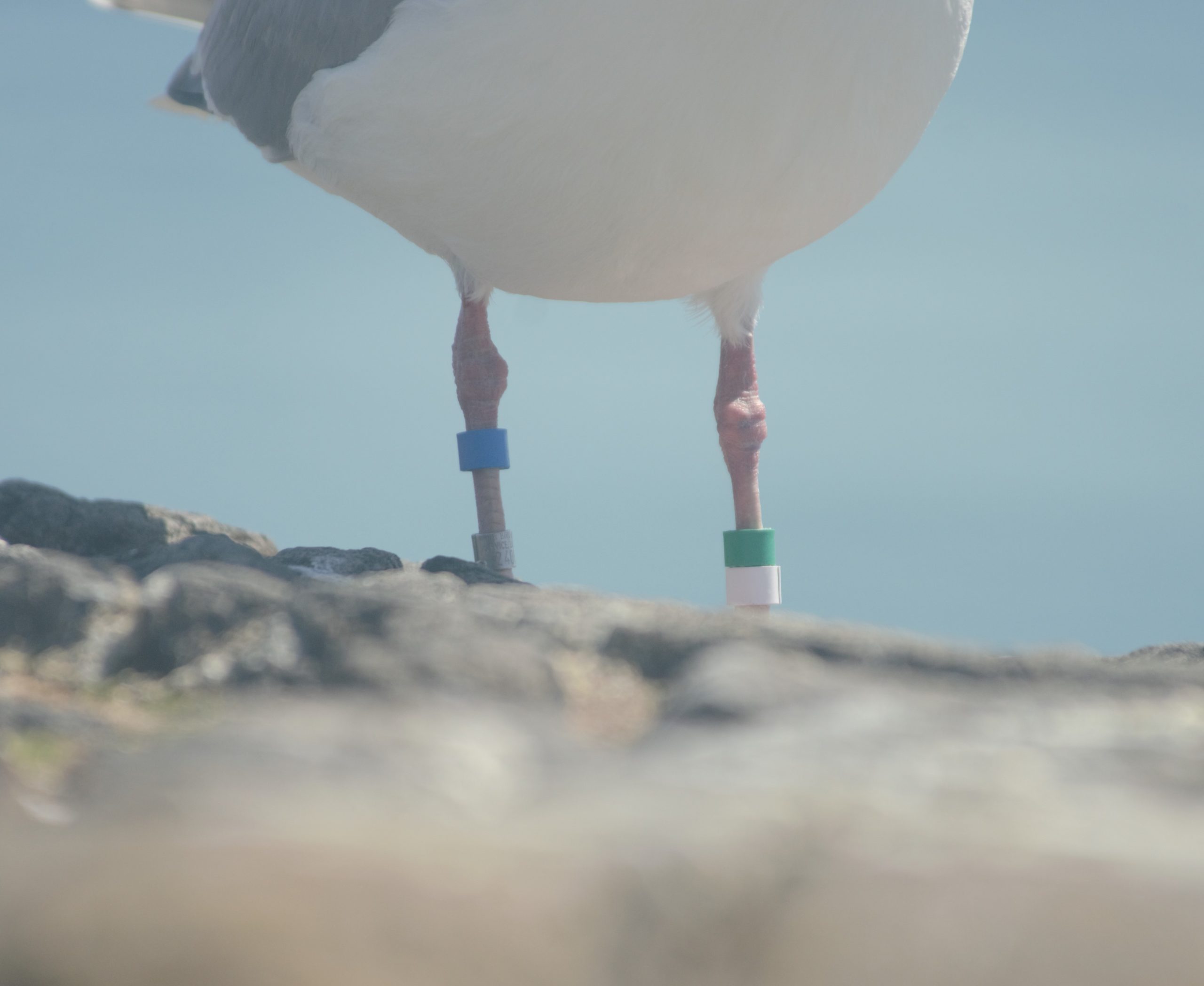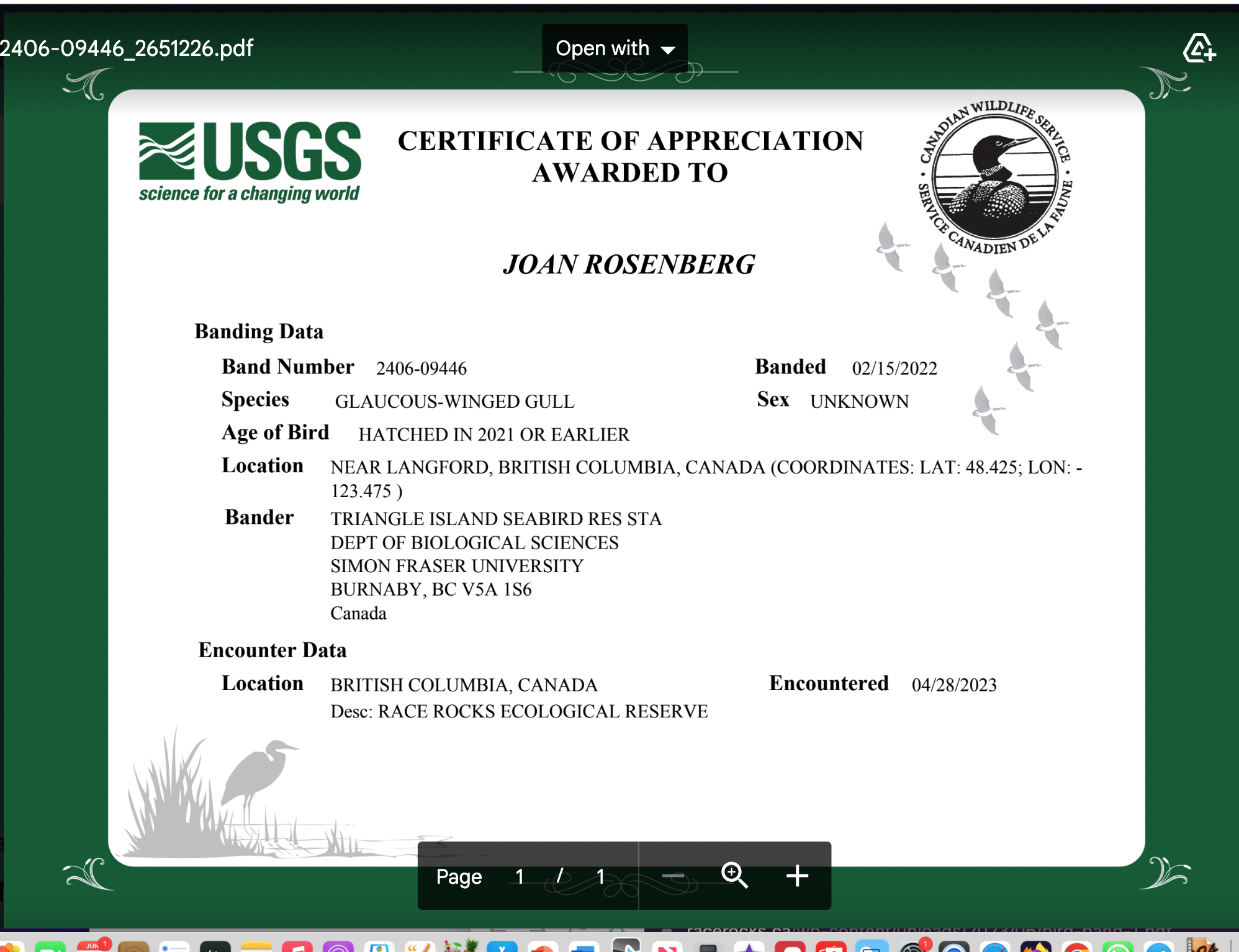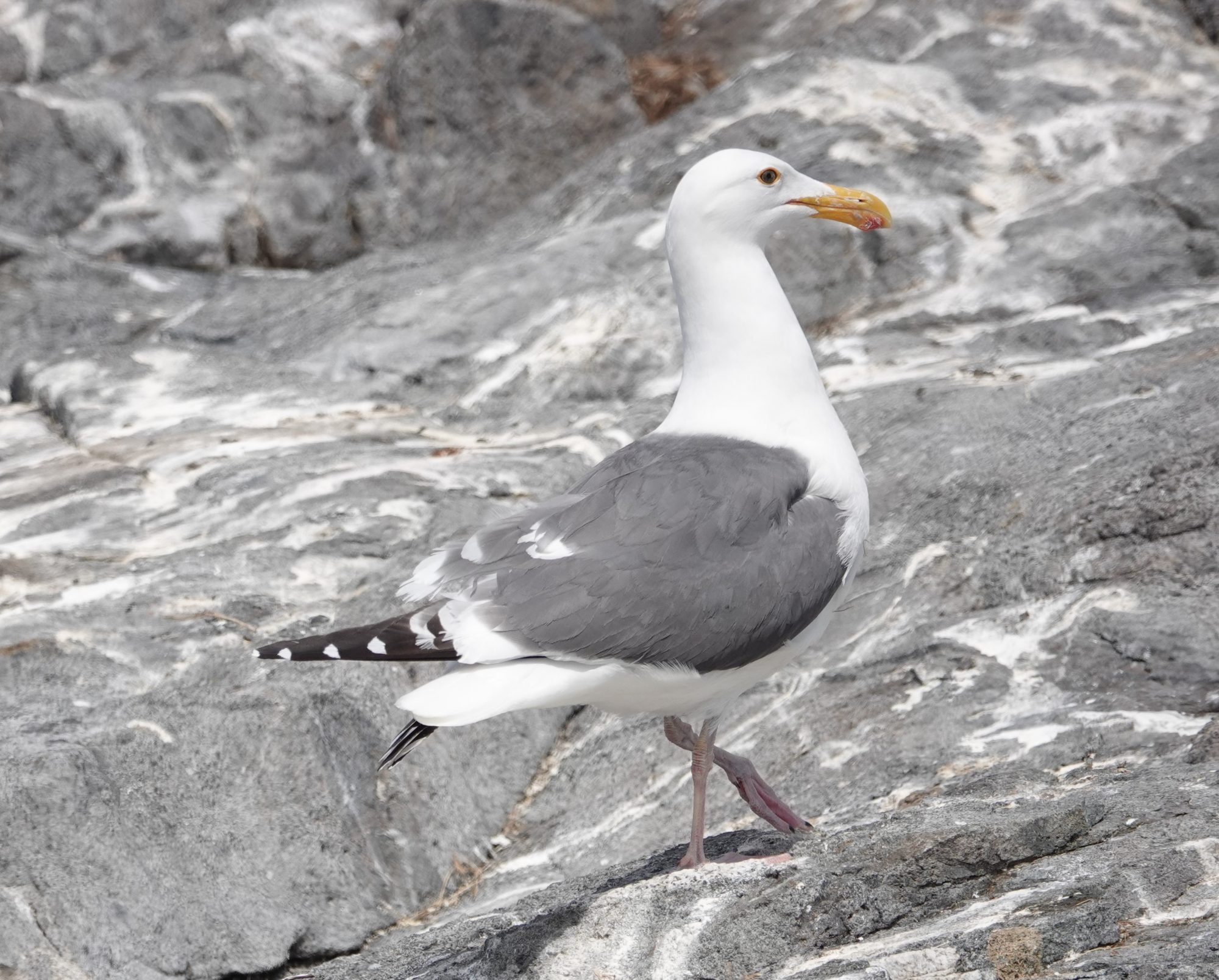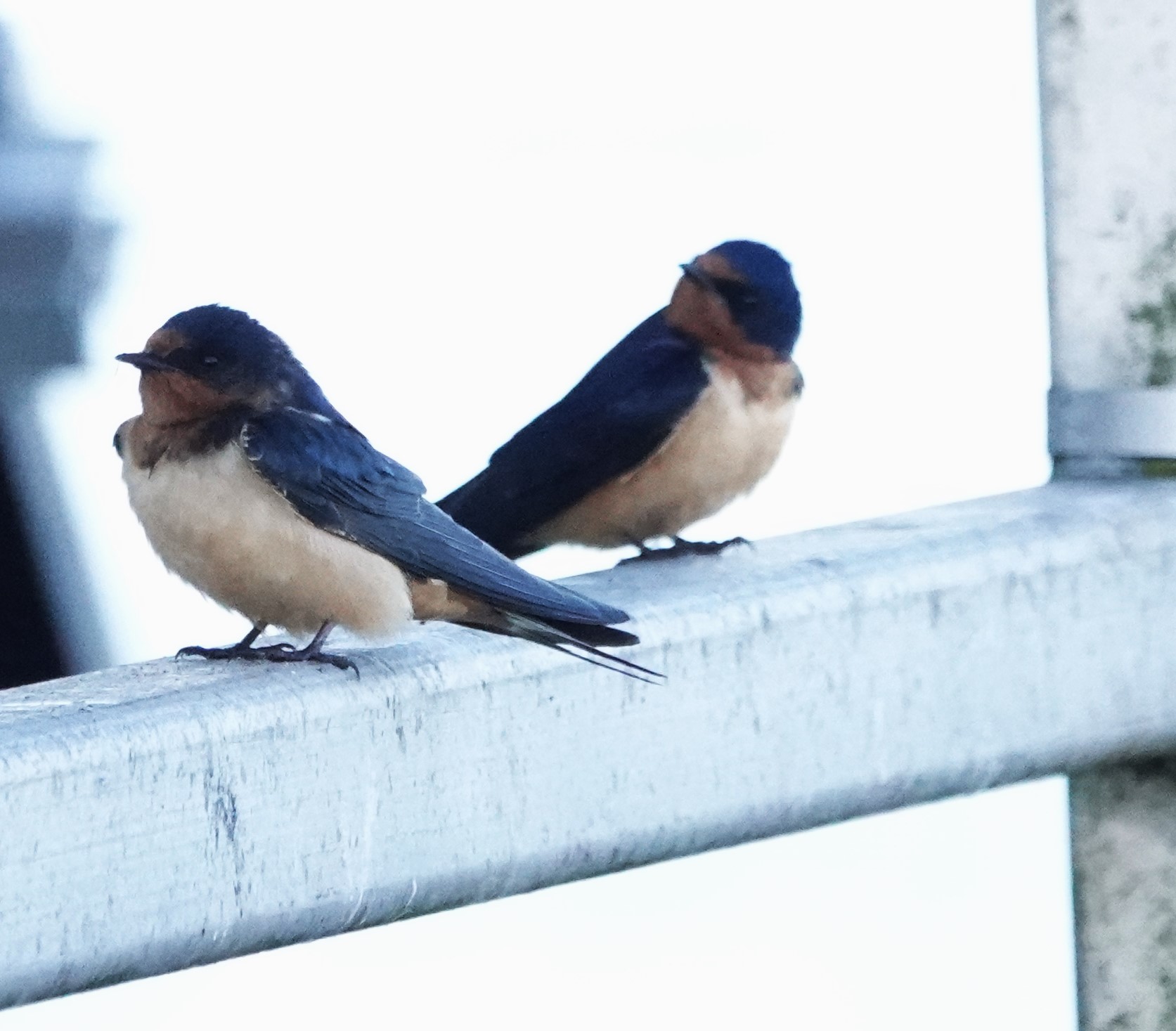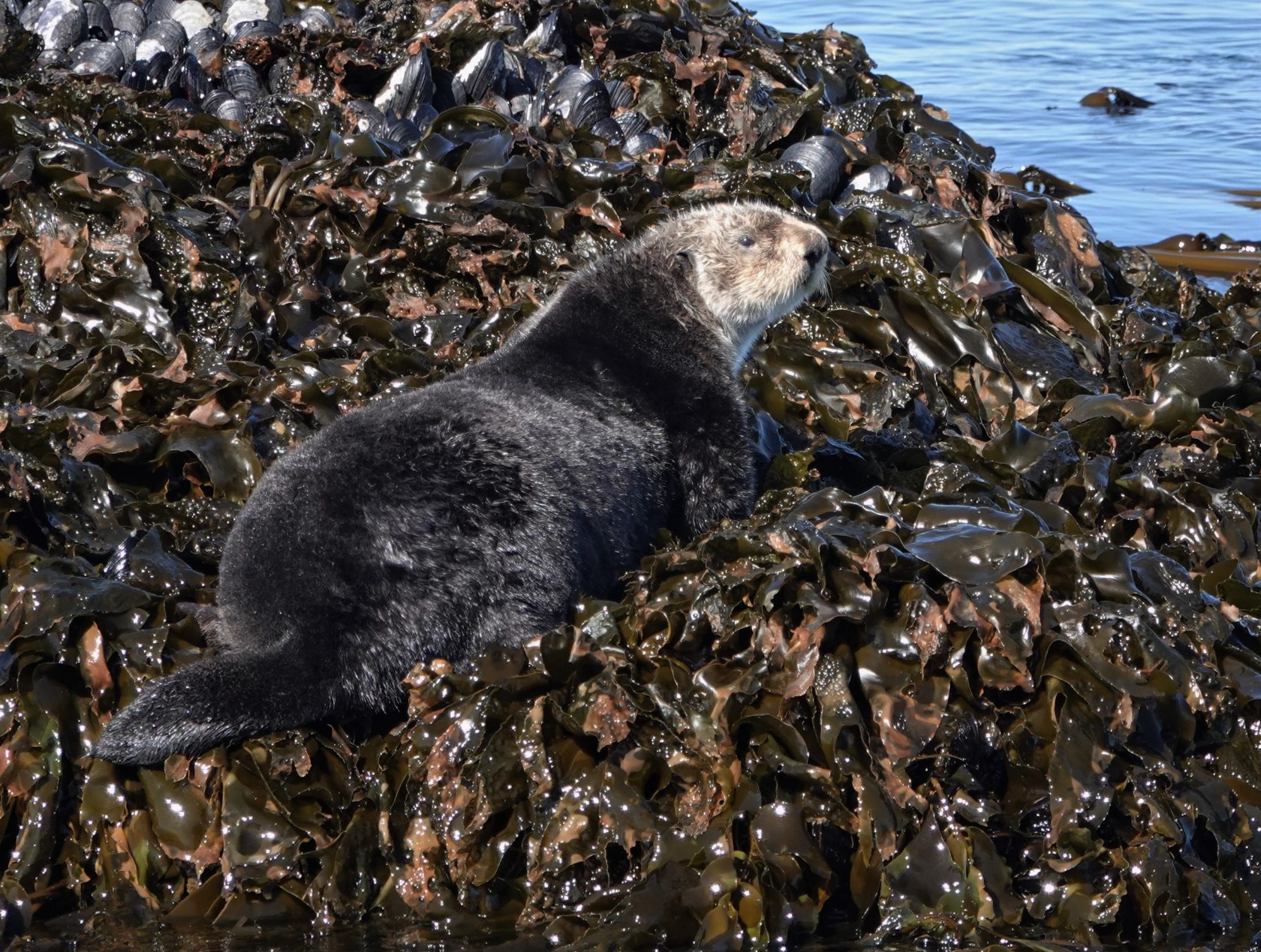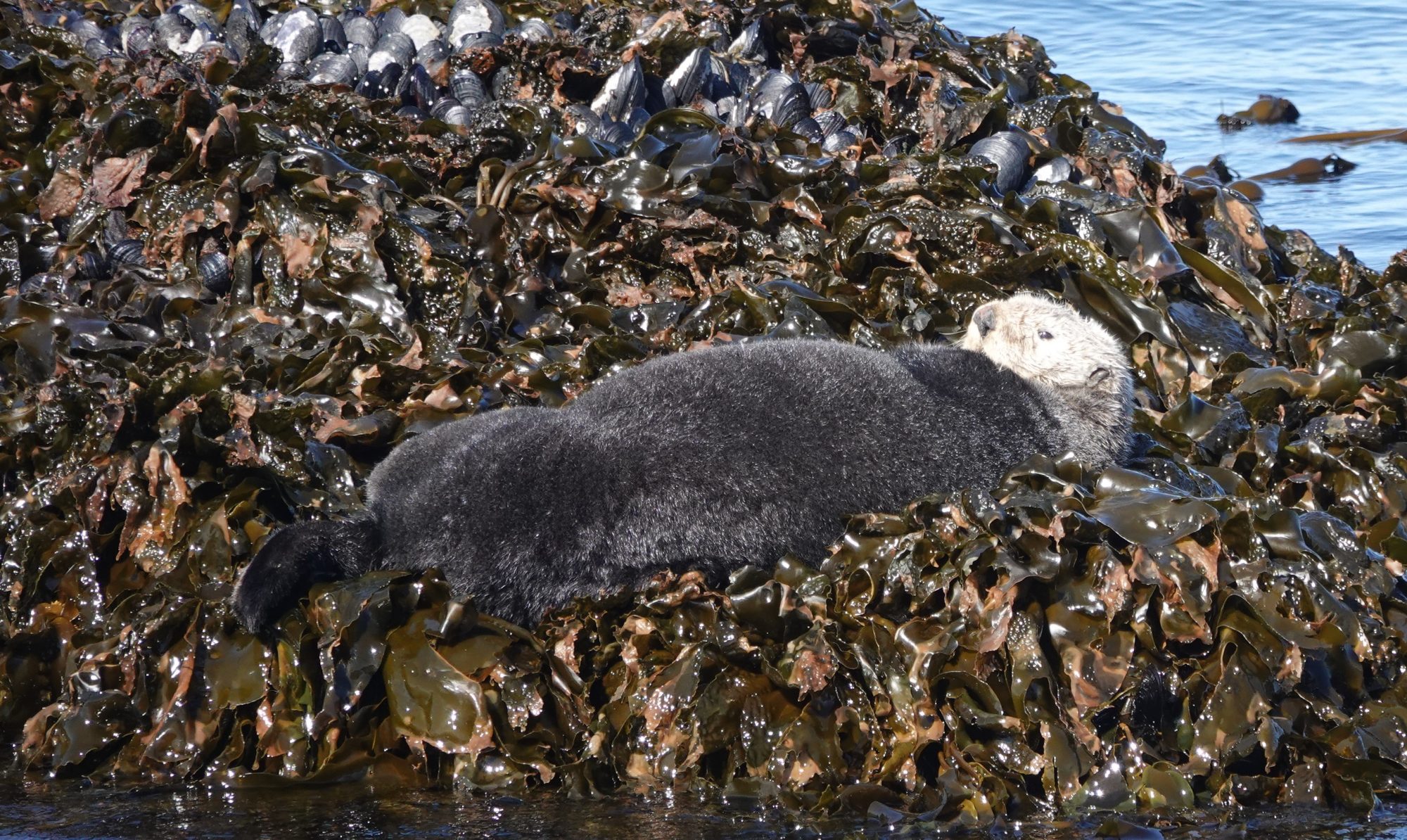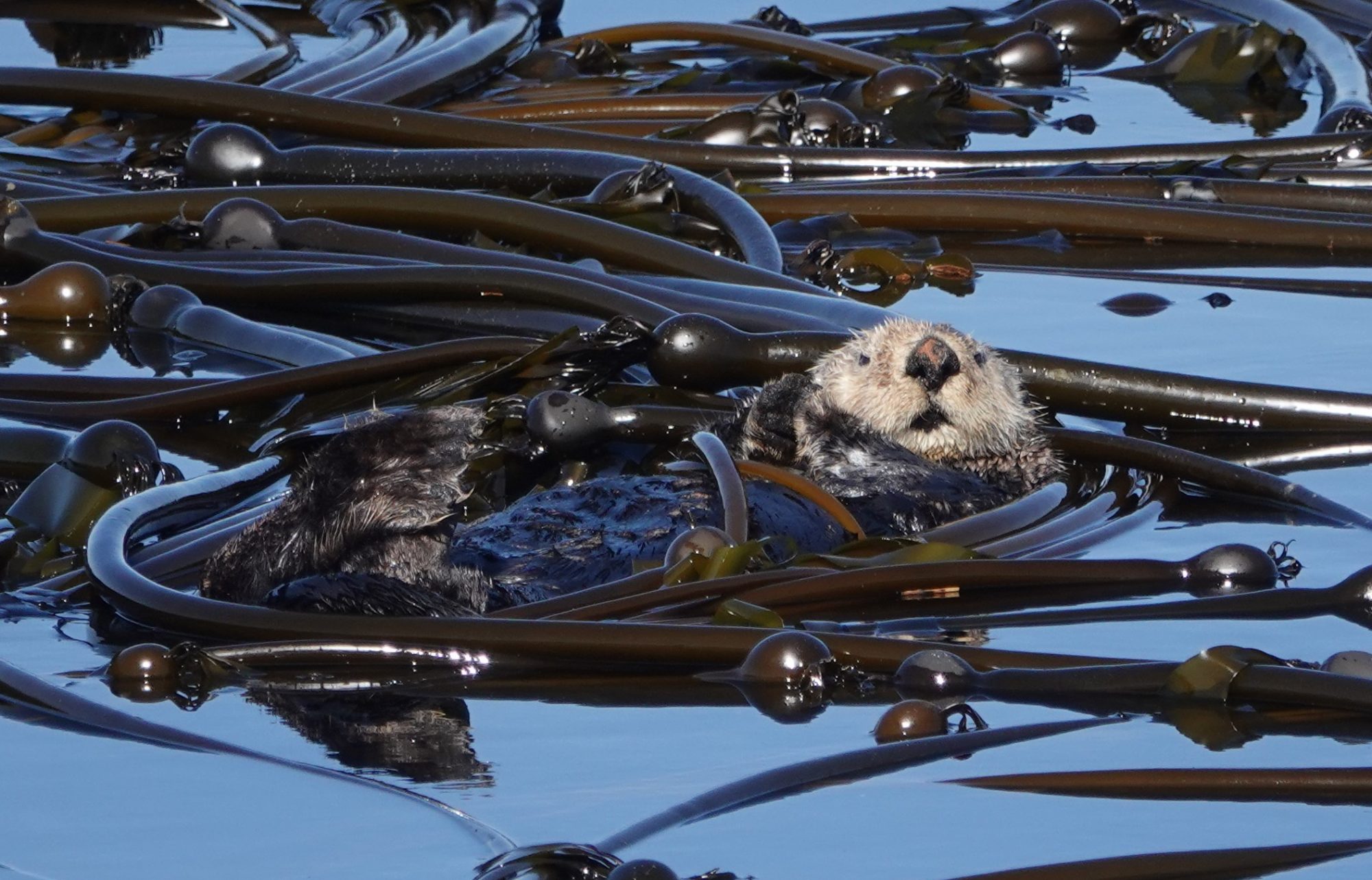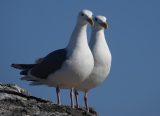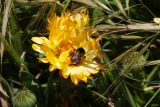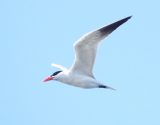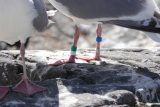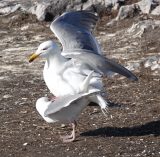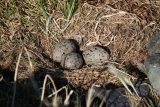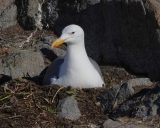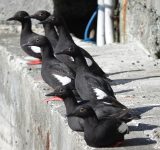Best Wishes to you if you celebrate anything special this time of year!
Ecological Notes:
- Still no Elephant Seals hauling out.
- 1 yearling(?) came ashore for a couple days. When if first arrived it spent half a day moving around the central area, “calling” loudly (perhaps checking for others to haul out with?)
- The Sea Otter – “Ollie” – was reported to be just off Helicopter rock by a photographer out on one of the EcoTourism boats. It’s nice to get updates on this animal, as his teeth are failing, and he is relatively old for a Sea Otter
- After dropping to very low numbers, there seems to be another surge of both Steller and California Sea Lions to the haul outs
- There have been 2 or 3 small wrens in the flower beds, with help from Ann Nightingale, we believe these to be Pacific Wrens … too fast for me to get my own photo ….
Visitors:
- 2 contractors from Viriidian Energy came and serviced the generator and upgraded the control system with an Auto Start/Stop system
- Park Warden Garry Fletcher visited, and in addition to gaining an overview of the park and facilities, spent time with the Eco-Guardian providing interesting stories and history around the facility
Facility Work:
- Spent some time analyzing and making adjustments to the new control system for the generator system
- Initial setting on the Auto system proved to be problematic in that they resulted in very extended runs times(up to twice as long = twice the fuel burn and fuel transport!) Discussed with the programmer and they remotely adjusted the unit to more appropriate times. Also, found out how to properly override the system for a manual run, to ensure once a week full charges can still be done.
- new control head
- old control head
- Will re-visit with the technician after the holidays
- After help to secure some more logs … ongoing bucking and splitting to build up firewood stocks for the winter.
- Did full maintenance on the chainsaw
- Now running both the old, and the new Seawater data units, to give both readings to adjust older incorrect readings
- Proof on Concept: As the damp wood produces less heat in the woodstove, I decided to try to curtain off some areas, such as the front doorway and the kitchen. Using found materials , the main curtain is very thin, and does not cover the top very well, but it still produces a very noticeable temperature difference on either side
Noted Vessel Traffic:
- Ongoing Eco-Tourism vessels in the park
- Several private vessels visiting, no noted infractions
Weather Events:
Ongoing winter weather, unseasonably warm, winds direction shifting daily, very little rain
- Monday, December 25::
- Sky: Dense, High overcast, very light sprinkles threatening rain, but none occurred
- Wind: ENE 5-15 kts during the day, rising to nighttime winds gusting to 35 kts
- Sea:1 meter swells from the East
- Temperature Low 8.5oC, High 11oC
- Sky: Dense, High overcast, very light sprinkles threatening rain, but none occurred
- Tuesday, December 26:
- Sky: Bright overcast sky
- Wind: ENE, calm in the morning, expected to rise to 25kts during the day and up to 45kts by evening
- Sea: Large rolling swells from the east
- Temperature Low 9oC, High 11.5oC
- Sky: Bright overcast sky
** All wildlife photos taken at the furthest distance possible, and may be cropped to improve detail! **
Weather – Current:
http://www.victoriaweather.ca/current.php?id=72
Weather – Past:

